Today TomTom has announced two new versions of their TomTom GPS watches. These new additions add in optical heart rate monitoring straight into the back of both the TomTom Runner and Multisport GPS watches. The new line – called the ‘Cardio’ utilizes the well known Mio sensor technology to measure your heart rate directly at your wrist, and does so in a form factor that’s waterproof to 50-meters.
I’ve been using the unit now on a number of rides and runs, and thus have a very solid grasp of how well they’ve completed the integration. Which, is really what this is. It’s essentially taking an existing TomTom Runner (or Multisport unit), and stuffing a Mio optical sensor in the back to measure heart rate and adding a couple of heart-rate specific information screens. Beyond that, it’s basically identical to the existing units. Of course, the addition of the optical sensor is a pretty huge thing.
Because I want to be transparent about my reviews – TomTom sent me a final production version of the TomTom Multisport unit. Once I’m complete here, I’ll send it back to them in Amsterdam and then go out and buy my own (to be able to support y’all in the comments section down the road). Simple as that. Sorta like hiking in wilderness trails – leave only footprints. If you find my review useful, you can use any of the Amazon or Clever Training links from this page to help support future reviews.
Lastly, at the end of the day keep in mind I’m just like any other regular triathlete out there. I write these reviews because I’m inherently a curious person with a technology background (my day job), and thus I try and be as complete as I can. But, if I’ve missed something or if you spot something that doesn’t quite jive – just let me know and I’ll be happy to get it all sorted out. Also, because the technology world constantly changes, I try and go back and update these reviews as new features and functionality are added – or if bugs are fixed.
So – with that intro, let’s get into things.
Unboxing and contents:
As is often the case with earlier units, I don’t actually yet have a full production box to unbox for you. I do however have a full production unit, with production firmware. Just…not the box…yet.
Still, as soon as I do I’ll quickly add those in.
In the meantime, the core contents are actually rather simple and straight forward. It consists of three things: The watch pod, the strap, and the charging/sync cable:
The pod is virtually identical in size and shape to the previous pods (more on that in a minute), and is fully compatible with previous straps.
The core difference though is the backside, which now contains the optical sensor. This sensor will read your heart rate via your wrist, by using optical light sensors to view down into your capillaries and then read your heart rate, which is typically transmitted to you in beats per minute (BPM).
Next, is the strap. The bright red and white won’t easily be lost. And, thankfully they’ve tweaked the band a tiny bit to fix one issue myself and others had with previous editions: It falling out and hitting the ground.
There is also a black edition of the strap as well:
This new strap has a bit more rubber around the edge, making it rather difficult to pull the pod out accidentally (or, even on purpose). I suspect the additional rubber is actually dual-purpose. First is to reduce incidents of the pod hitting concrete when taking off the watch. But likely more importantly is because the rubber edging acts as a light barrier. Light is the evil arch enemy of the optical sensor. If light gets in, it reduces accuracy.
Just to be clear, I’ve tested the old pods in the new strap, and it works great. And, for fun, you can also place the new pod in the old straps (not sure why you’d want to, but you can).
Adding the strap in with the pod and turning it on, here’s how it all looks:
Finally, we’ve got the USB charging cable. This is used to to both charge the unit as well as to synchronize activities via your computer (PC or Mac).
The cable is identical to the existing cable, and works with new and old units alike. Note that you can also use your phone to sync activities, which I’ll cover a bit later on. Note that the unit does not enumerate as a standard USB mass storage device (like a thumb drive), thus, if you’re running a computer operating system outside of Windows/Mac, it won’t show up.
Size Comparisons and Weight:
As you’ll see shortly, the TomTom Cardio variant of the Runner and Multisport is identical in size to that of the non-cardio versions. And, both the Runner and Multisport Cardio units are visually identical as well to each other.
But first, we’ll look how it compares to other units in the running and triathlon realm. I tried to put as many competitive units as possible into the same picture, including those that compete with both the Runner and Multisport editions.
From left to right (above/below): Garmin Fenix2, Adidas Smart Run GPS, TomTom Cardio, Polar V800, Soleus Pulse, Suunto Ambit2 R (2S is identical), Timex Run Trainer 2.0, TomTom Runner/Multisport (non-cardio), Garmin FR620, Garmin FR220.
Depth wise you can see that the TomTom is among the skinner of the watches. However, be aware that it does have a bit more of a curved plastic chunk sticking out the bottom where the button is.
Finally, here’s a bit of a closer look at the TomTom and some of the higher end units.
As I noted earlier, the differences between the previous TomTom units and the new Cardio ones are nearly physically indistinguishable. Below, you can see the two from the front (ignore the screen, I had an older unit not updated with the phone option).
Below, you can see the back of the same units. In this case, the only physical difference is that the new Cardio unit has the optical sensor, versus a solid backing of the other unit.
So how does that affect weight? Well, it doesn’t seem to very much. First, let’s start at the full weight including the newly designed strap – 63g:
If you compare that to the previous unit with a sorta similar strap, you’d see a 10g increase.
Except, that doesn’t really tell the whole story. Instead, check out the actual pod portions. Below, is the Cardio at 32g:
And then, the non-cardio at 31g:
In other words, it all really comes down to the strap adding the weight. But I don’t find the weight excessive, and it’s certainly far less than most other multisport watches on the market (most of my reviews have weights in them).
Running – Outdoors:
The TomTom watch is really a runners watch, that happens to bike and swim on the side. So in many ways, I find that it’s at its best while I’m running. To start off an activity, we’ll dive into the menu using the button below the display. This buttons acts like a little joystick to control the unit. The display itself can be tapped along the right edge to turn on/off the light, as well as to create laps in certain situations.
Once we’ve selected running we’ll go ahead and wait for the unit to get satellites and initialize the optical sensor. Neither take very long. The TomTom unit will pre-cache satellite information each time you connect it to your computer. In doing so it knows the satellite locations and can pickup satellites in just a few seconds. My testing has found that I’m rarely waiting more than those few seconds (literally, a few, like 3-7 seconds).
The optical sensor is generally also quite quick, finding my HR in under about 10-seconds. Though sometimes I’ll notice it takes a little bit longer (upwards of 20-30 seconds) to find HR and start displaying it.
Once that’s ready, we’ll press to the right to start the run. As we do so the unit will immediately start recording data and displaying the metrics we’ve chosen.
The unit will always display two metrics up top (known as ‘left’ and ‘right’), as well as one metric down below on the main screen. You can press up/down to change the main screen metric, and you can customize the left/right metrics in the settings.
For example, here’s the current pace:
And here’s my lap distance on the main screen, which in this case equals my main distance (shown in the upper left):
Or my heart rate in beats per minute:
I can then press to the right to trigger some of the heart rate training features. This includes the ability to see visually where I’m spending my time zone-wise, as well as a heart rate graph of the last little bit of the activity:
When it comes to breaking up the data, you can use the lap function, which is found in the training menu. The lap function allows you to tap the screen and create a lap whenever you’d like. It’ll give you the lap count and the average pace for that lap:
This then also enables the lap data fields such as lap time and lap distance, which will be shown during the activity. Within laps you can manually set them (as I do when running my custom workouts), or you can have them automatically created based on distance (as I do in my long runs, every 1-mile), or based on time (such as every 10 minutes).
Note that TomTom puts the lap function as a ‘Training’ option, which means it’s not compatible with the other training options, such as goals, intervals, pace, race or zone training…which, I’ll describe next.
In the case of goals, you can set a predefined end-state goal – such as 10KM or 60-minutes to run. When you do so the unit will show a pie chart (like Pacman) of your progress towards that goal:
Along the way you’ll get notified at 50%, 75%, and 90% of your goal. Goals can be defined based on calories, time, or distance.
Next, there’s the ability to train towards a zone. This allows you to specify a target for a workout, using either pace or HR. If you select pace, you can choose a specific pace range. I like this implementation, as it recognizes the fact that it’s virtually impossible for a GPS to pace you to exactly 7:35/mile. Rather, it’s much easier to keep you in between 7:30/mile +/- 20 seconds.
Next there’s the interval function. TomTom has made some solid progress here in the last year, implementing a fairly solid interval function on the unit. Within this you can define the warm-up (time/distance), the work period (time/distance), the rest period (time/distance), and the cool-down period (time/distance). Then, you’ll simply define the number of reps, and it’ll walk you through the workout:
Note however that there’s no method to define a target – i.e. ‘7:30/mile’ or HR Zone for any portion of the workout, so you’ll have to remember what those are. Though I suppose most people generally know the defined level of pain of the workout fairly well going into it. But that means you won’t get any sort of alerting or pacing either.
Now, as you’re running in any of the modes you can pause the workout at any time by holding the left button down for 3 seconds. This ensures that accidental button presses don’t trigger an immediate pause and then end to the workout. If however you want that, you can turn off the ‘Lock’ setting within the unit settings.
Finally, to end a workout entirely (and thus automatically save it), you’ll go ahead and repeat the same procedure from the paused screen, holding for three seconds again.
In looking at accuracy between the units, I saw it perform within 1% of any other GPS I was using at the time. For example, below, the TomTom measured 8.03Mi, while the Fenix2 measured 8.05Mi.
Or here, the TomTom measured 20.75mi, while the Fenix2 measured 20.83mi. Well within the range of any consumer GPS device for accuracy differences.
Running – Indoors/Treadmill:
Next, we’ll look at treadmill capabilities. The TomTom utilizes an internal accelerometer to measure pace and distance indoors without the use of GPS. It does this by evaluating arm swing and cadence to determine pace. TomTom was among the first major companies to introduce this on their units a year ago, and so I was curious to see how things have progressed since then. Last time I looked at it upon launch, it generally didn’t work too well for me.
Treadmill mode is a separate standalone mode that simply enables only the optical HR sensor and the accelerometer for measuring the pace/distance. Note that you’ll get most of the same training options as in outdoor running modes – so you can still do functions like laps/zones/intervals.
Once you start it, it’ll immediately start recording pace/distance like other modes.
However, upon completion of a treadmill workout it’ll give you the opportunity to ‘Calibrate’ the unit. So I started off with a short run to calibrate things. Interestingly, out of the box it was only .01KM away from what I had just ran.
All you do in the calibrate menu is simply enter in the actual distance that you ran, and it then adjusts the file:
As I often do for these tests, I find it easiest to just work my way through a step ladder of paces on the treadmill. I start at a pace slower than my usual, then iterate every minute until a much faster pace than my usual long run pace. In this case, I went with 10KPH (about 6MPH) up to 17KPH (~10.5MPH). I’m using KPH/MPH simply because that’s what my hotel treadmill offered to me.
Here’s the result below. In my case, the actual distance on the treadmill was 2.03KM, not 1.85KM. Now, the trick is actually being able to see the data in the tiny little chart they give you.
It’s really hard to see there, so I had to zoom in and figure out where things were good and where things were bad, one little piece at a time by hovering over the top of the line and matching it to my known paces for each minute.
In doing so I found that even though I topped out on the treadmill at 17KPH, the unit thought I topped out at 12.8KPH. What’s also strange is that for the last minute I actually dropped back down again to 12KPH (from 17KPH). Which, you can see isn’t reflected at all in the graph. Essentially, changing my pace had no effect on it.
So, for the fun of it, I tried another run on the treadmill – a different treadmill no less. Not that it would have mattered, my body is very clear when I’m running nearly twice as fast in one section as the other.
In this case, I did the first part of the workout on my left wrist, and the second half on my right wrist. Repeating an abbreviated 4-5minute pyramid build for each section. Here’s what it looked like from a treadmill pace standpoint:
And from the TomTom’s perspective? Another flat line, just like the first time.
Essentially, best I can tell, the unit and me only have one basic speed. When I speed up, it doesn’t really do anything (actually, eventually it says I’ve slowed down). When I slow down significantly – it does slightly shift my pace, but only by about 10% of actual.
Ultimately, this is similar behavior to what I saw last year. At the time, they were the first to attempt wrist-based speed detection in a mainstream GPS watch (Bryton had done it previously, as had a few other non-GPS watches). Since then, others have joined them, including Garmin, Suunto and Polar. While the jury is out on Polar’s attempt for a bit longer, in my testing of Garmin’s latest watch – the Fenix2, it pretty much nailed my indoor running based purely on wrist detection. And Suunto was right behind it as well.
In discussing it with TomTom, they’re working on an update for Q2 that they believe should fix many of the treadmill issues I saw, and should give proper speeds.
Cycling:
(This section applicable only to Cardio Multisport edition)
The TomTom Multisport Cardio variant supports a cycling mode, which enables you to have a dedicated cycling mode. Within this mode you can configure slightly different display screens, while also connecting to a cycling speed/cadence sensor. Further, if you purchase the ‘Performance Bundle’ edition, you’ll also get a barometric altimeter. Note this is a physical hardware change, and thus, is a separate physical unit and not just a simple firmware update.
In many ways, the cycling mode works very similar to that of the running mode. The key difference however is that the default metric is ‘Speed’ (i.e. MPH & KPH) versus ‘Pace’.
In the cycling mode you can also connect to a Bluetooth Smart Speed/Cadence combo sensor. This enables two scenarios. First is that you can get cadence (both indoors and outdoors). Second is that you can get speed indoors on a trainer, as well as outdoors in scenarios where GPS may not be accurate (i.e. a tunnel, or mountain biking in heavy tree cover with many switchbacks).
Now, you will want to be aware that the speed/cadence sensor needs to be manually configured with your wheel size. If you don’t do this, you’ll get inaccurate distance. Also of note that I discovered is that the speed sensor speed value will override GPS. Thus, if you happen to have the magnet fall out of alignment with the sensor, you’ll get a zero speed/distance value (been there, done that). This is a bit different than other units on the market that will look at situations where either GPS or speed sensor values equals ‘0’, and use the other speed source instead.
In addition to the speed data, you’ll get the cadence data, which can be added as a data field onto the unit itself. Further, that data will be recorded for later viewing:
In addition to the speed/cadence sensor you can also mount the unit to your handlebars using bike mount kit. This easily straps on using a rubber band type system, and securely holds the unit in place.
Now, the obvious problem here is that in doing so it’ll no longer measure heart rate via your wrist optically. So instead you’ll need a Bluetooth Smart heart rate strap if you want to gather HR data. The TomTom unit does indeed support connecting to external straps via the sensors menu.
In my case, I just kept the unit on my wrist so I could gather HR data while cycling. I also paired it to a speed/cadence sensor.
Living in Paris, many of the streets have cobblestones. It’s well known that vibrations and repetitive bumps cause issues with optical sensors (as well as accelerometers in other applications), and thus, it was the perfect place to test the validity of the HR data while riding. However, instead of covering exactly how that test ended up, I’ve included all my comparison test data later on in the accuracy section.
Next, I took a look at the elevation data on one of my rides – the only ride with a big hill in it. In this case I completed a nearly identical out and back – with the top of the hill being my turnaround point. Now it was ‘nearly identical’ simply due to the reality of one-way streets limiting my choices. But the elevation differences between the slightly different routes for a few blocks was minimal. Below, you can see the graph I made.
Except, here’s the thing – in my case, I was using the non-performance bundle, and thus, the elevation data shown on the site is actually from the server based on my GPS route, rather than recorded by the unit itself. This is true of the runner as well.
Ultimately, only the ‘Performance Bundle’ unit includes the barometric altimeter, and is/was not one of the units I was provided to test with. In that unit, you can add/select the ‘Elevation’ data field into the list of data fields shown on the watch in cycling mode. Down the road, they’ll be enabling it in running mode as well in a software update.
Finally, it’s worth noting that while the Multisport unit defaults to speed for cycling, you can actually use the TomTom Runner Cardio in running mode and just change the metric to speed instead of pace. It’ll label your workouts as ‘Runs’ on TomTom MySports, but ultimately if you export to any other 3rd party sites you can easily just change the activity type to ride.
Swimming:
(This section applicable only to Cardio Multisport edition)
The TomTom Cardio Multisport includes the ability to capture swim metrics while in pool. This includes distance (i.e. 2,100 yards/meters), strokes, time, and SWOLF. It does not include heart rate while swimming. Again, let me be really clear – as it stands today, the TomTom Cardio Multisport does NOT capture heart rate while in swimming mode.
Today, it focuses on the standard indoor pool metrics. In this mode you’ll start by selecting your pool size. The unit allows you to enter in any size from 15y/m to 50y/m. What’s a bit annoying though is that it doesn’t allow you to entire either a yards pool or a meters pool. Rather, you have to go back into your settings and change everything to yards or meters. Given many swimmers, especially in the US, will alternate between a 25y and a 50m pool depending on availability, it’s sorta frustrating this is still an issue nearly a year later. It also doesn’t allow you to enter partial yards (such as the 33.3M pool I swim in). (Update: They’ve released a fix to enable this).
In any case, the size is saved, but you’ll need to remember to switch back your total unit settings if your pool size doesn’t match what units you normally want displayed in running/cycling.
Once that’s done, you’re ready to start swimming:
Once you press to the right to start the unit, it’ll track each length of the pool. In doing so it captures strokes, lengths, distance, time and SWOLF. SWOLF is a combination of Swimming and Golf, and produces a swim efficiency score based on how many strokes you take per length. In theory, less is better, but in practice you have to be sure you aren’t artificially producing less strokes (with paused gliding) simply to hit a number. All major swim watches on the market today capture this metric.
You can press the up/down button to change display fields, and like in running and swimming you can specify the upper two display fields be whatever you’d like.
The unit in my testing has no problem with either flip turns or open turns (non-flip turns). For the swim below, I pretty much alternated each length doing one or the other. So you can mix them as well. It’s important to note that the way all swim watches on the market work today indoors is not via GPS, but rather via accelerometers. As such, pushing off the wall is ultimately what tells the watch whether or not you’ve completed a lap.
Thus it’s really important to push off the wall in a crisp manner, and to avoid random wanderings around the end of the lane when not in a paused mode. Or, going to the bathroom while not in paused mode. If you’re not swimming, pause the watch – simple as that.
I found it very stable in my pool, which on one day when I was testing I had 9 people in my lane, which meant I was constantly accelerating to pass folks, as well as slowing down when I couldn’t pass. It matched the exact distance that I swam, and the Garmin Swim on the other wrist also matched that distance.
Upon completion you’ll be able to see your swim totals online:
As you can see above, it’s pretty minimal. What you see above is the entirety of what you get. That’s it.
Now, before we move onto the heart rate while swimming piece, I do want to briefly mention a few modes that are within the unit in swimming. In my case, I just went with a straight ‘swim forever’ mode. In this mode there isn’t actually a way to mark any laps (kinda annoying), so you can’t easily divide up sets. But they do include the below modes which can help a bit:
Goals Mode: This allows you specify a total distance, time, or calorie target to aim for and gives you progress updates towards that goal.
Interval Mode: This works just like it does in running. The difference though is that you’ve got to enter in the distances in miles or kilometers. Which, isn’t really how most people swim. For kilometers it’s easy, but for miles it’s a mess.
Lap Mode: This allows you to automatically create laps after a specified time or distance. Like above, distance is entered in either in miles or kilometers.
Swimming – Heart Rate Metrics:
Now, I know all of you are wondering: How can I get heart rate while swimming?
Well, in the ‘Swim’ mode per the watch and as I’ve outlined in the previous section, it doesn’t turn on the optical HR sensor, nor will it pair with an external one. However, for fun, I decided to see what happens if I just told it to use treadmill mode instead. Treadmill mode on the TomTom Cardio is what I’m using as my ‘catch-all’ bucket for anything that I want optical HR on, but don’t want GPS on.
So, I turned on treadmill mode and waited for it to find my heart rate. Standing at the end of the lane line (wet), it took longer than normal – almost a minute (versus the usual 5-15 seconds). But, once it found it, it appeared accurate just standing there.
I then headed on out to swim some laps. I watched as the heart rate rose steadily and seemingly in concert with my effort, then, I watched as the heart rate stabilized after about two laps. The screen was incredibly easy to see underwater by just twisting my wrist slightly at the beginning of the ‘pull’ phase of the stroke, or pushing off the wall.
In doing so, I was able to monitor the HR pretty much constantly during that effort, and at no point did I see the HR veer out of control, or do anything unexpected. Upon completion of the set, I went ahead and just stood at the wall with my hand still underwater to see how well it would return to normal. In doing so, I saw no issues returning back to a resting/standing heart rate.
Below, is the heart rate snippet from that time period:
Again, because it’s in treadmill mode – there’s no strokes/distance/length data. There’s just a bunch of random junk distance data from the watch thinking I’m running on a treadmill. But, for those wanting the heart rate data, you now have a method of capturing it in a single unit. Remember that the unit can easily export out to CSV file, or any other file type including .FIT and .TCX (more on that later in the review).
In talking with TomTom about enabling heart rate during swimming mode (so you get swim distance/stroke/pace metrics), they noted it’s something they’re looking at, but are at the moment focused on ensuring the running experience with the optical sensor is the priority.
Multisport Mode:
(This section applicable only to Cardio Multisport edition)
Like the regular TomTom Multisport unit, the Cardio Multisport unit does not actually have a ‘multisport mode’. Traditional triathlon focused watches tend to have such a mode, which enables you to quickly switch between different sports in a race or brick (training) scenario.
It’s a bit puzzling that the unit still doesn’t have this functionality nearly a year later – especially given it’s focused exclusively on the multisport market. However, I suspect that lack of feature likely comes from the fact that the unit doesn’t do openwater swim tracking and thus, it’s limited in usefulness in a full end to end race scenario.
Further, given the typical quick satellite reception, you can easily save (hold left three seconds, then again three seconds) very quickly and then re-start a new session near immediately from the same locale in just a couple seconds. All of which most triathletes can do while running within transition.
I can only hope down the road we’ll see both outdoor swim functionality, as well as a multisport mode.
Optical Heart Rate Sensor Accuracy:
Before I dive into accuracy, let’s start back at the beginning though and explain what exactly an optical heart rate (HR) monitor is. These are heart rate monitors that use optical light sensors to view down into your capillaries and then read your heart rate, which is typically transmitted to you in beats per minute (BPM). While the end metric is the same, the measurement technology is different from heart rate straps of the last 30 years, which have been worn around your chest and pickup your heart rate electromagnetically. In the photo below you can see this green light emitting from inside the band of the watch.
Mio initially introduced this technology about 21 months ago with their Kickstarter funded Mio Alpha unit, which I subsequently reviewed once they produced final units. They subsequently launched their latest edition, the Mio Link, three months ago, which start deliveries in about 10 days.
Following Mio’s initial launch, another company – Basis, launched an optical HR device, the Basis B1 watch. However, that device wasn’t aimed at the sports crowd, but rather more at the activity monitor/tracker crowd. For example, it worked well for the 23 hours of the day you weren’t exercising, but didn’t measure HR during exercise. Ultimately, it uses slightly different technology and algorithms on the optical side.
Finally, fast forward to last fall, and Adidas launched their Smart Run GPS with the optical HR sensor built in. That sensor was provided by Mio. And just like the Alpha and Link, it worked spot-on for me as well in measuring heart rate optically.
There are other companies as well in this space, for example Texas Instruments supplies sensors to some companies. And 4iiii’s recently announced their optical HR pod products as well. And further yet other companies utilize various white label and internally developed solutions. Below, you can see such a solution on the Soleus Pulse watch (non-GPS).
So with that background in place, let’s take a look at accuracy on the TomTom Cardio unit, and see if it continues the tradition of quality heart rate data from an optical sensor.
Hard VO2Max Interval Run:
This was an interval run that started off with a 15-minute build period. Then, it transitioned into 8x800m, each at a fairly quick pace – resulting in a high intensity workout at pretty much my absolute max heart rate values. Here’s how things looked on the TomTom Cardio unit:
And then next, using a traditional heart rate strap (Garmin HRM-RUN):
In this case, you see that the HRM-Run for some reason struggled a bit on the 6th and 7th interval. I wiped away the sweat behind the strap and it immediately went back to normal. It was a fairly warm night, and combined with the higher intensity workout, I was drenched. On the first interval you see a bit of a delayed pickup on the HR strap as well.
In the above run, I saw no abnormalities with the Mio optical sensor within the TomTom unit. It worked flawlessly.
Long Run: 2 hours 30 minutes
This was a long and steady run, once I warmed up into zone, I stayed with it and was completely constant based on heart rate for the entire run. Here’s how things looked, first, the TomTom Multisport:
You’ll see one minor odditiy around the 7-8 minute marker, with a spike. I noticed it while running, and then tightened the strap. It was a little bit loose. Once I did that, the spike immediately went away.
Next, we’ve got data from a traditional heart rate strap (Garmin HRM-RUN):
As you can see looking at the two they are virtually identical after about the 8 minute marker once I tightened the strap. Throughout the run I’d glance and they were always the same or +/- a single BPM. Very impressive.
Cycling…Cobbles and All:
This was an hour long ride through the streets of Paris. In this case I wore the unit on my wrist, as opposed to using the bike mount – specifically so I could collect accuracy data. My route included long stretches of cobbles (upwards of a half a mile at a time), which are notorious for throwing off all sorts of sports technology devices.
First, the TomTom Cardio optical HR data:
Then next, the traditional HR strap data from a different non-TomTom unit:
They are very similar. The one difference you see is around the 33 minute marker, the HR strap seemed to produce a bit of a spike to 110BPM. I’m actually not clear if this was correct, or if the TomTom was correct here. I was descending (hence the lower HR’s), and thus I would have been surprised to see a spike. But since I was descending at night on cobbles, I was slightly less focused on the HR’s there.
The Girl’s Long Run: 3 Hours
In addition to my running and rides, The Girl has also spent some time with the unit, or more specifically, a long 3 hour run with the unit. I helped her get all set with the unit and then sent her along her way. Here’s the data from the TomTom unit first:
Looking at the above, there’s one spot at about the 12 mile marker where the unit seems to drop by about 20bpm. It’s unclear if that was reality or not (since the strap below doesn’t show it). You can also see a bit more variability in the second half of the run with the strap, as she increased intensity. She noted to me that the numbers were nearly always the same or within 1BPM or so when she looked at the displays. So from her HR zone pacing perspective, they were both valid.
And then, the data from the traditional HR strap (HRM-RUN).
In her case, you can see a single spike early on in the run on the heart rate strap. I checked with her, and she said that was erroneous and was not some sprint she did. That brief HR strap spike only lasted a few seconds out of 3 hours of running.
Given we’re talking about The Girl’s run, I do want to point out that while she found the optical HR piece just fine and dandy, she was not terribly thrilled with the pod on the watch itself. Specifically, she felt it dug into her wrist bone quite a bit and found it fairly uncomfortable for the run she used it on. This is likely because the pod is hard plastic and leaves no room for movement or flexibility.
Overall though, looking at all the optical heart rate stats from all the above rides/runs, I don’t think anyone could realistically say that the optical HR measurement didn’t perform better than the HR strap. It seemed to in almost every case, both for myself and The Girl.
All Day Activity/HR Recording:
First off, the TomTom Cardio does NOT record your daily steps. Nor, is it an all day activity tracker like a FitBit or Fuelband. Those products are designed for that purpose. Again, this is not one of them.
With that out of the way, I was curious. I was mostly interested in how well it’d be able to track my heart rate over the course of an entire day. Both in terms of accuracy, but also in terms of battery life. I previously did this experiment with the Mio Alpha (first generation of the sensor used in the TomTom Cardio). In that case I had to pair it to a phone in order to capture the data.
In this case though, I simply used just the TomTom Cardio itself. I started by ensuring I had a 100% full charge. Then I simply started a ‘Treadmill’ activity. In this mode the unit keeps GPS disabled, but turns on the optical HR sensor. It also tracks distance via the accelerometer inside the unit. Obviously, it’s meant for running on a treadmill.
The watch quickly found my heart rate as usual and off about my evening I went. For my walk to the grocery store the distance was roughly accurate, however, upon returning and starting to cook dinner the distance was no longer in the ballpark of reasonable. It had chalked up some three miles in about 45 minutes worth of prep work in my kitchen. My kitchen is roughly the size of two port-a-pottie’s floors. I couldn’t walk three miles in there if I tried. So with distance not really accurate, I focused on the heart rate side.
I’d occasionally glance down and see where things stood accuracy-wise, with each time the unit being right where I’d expect it to be. While sitting around watching TV I saw my HR fairly low (50’s). And while riding the city share bikes across town I saw it a bit higher (110-130bpm, with a slight spike once trying to make a light). All was good there.
But perhaps the most impressive feat was the battery. By the end of the first night the battery was still showing a full charge. And it wouldn’t be too far from the truth. It would end up taking 26 hours for the battery to drain fully – far longer than I ever expected. In talking with TomTom, this mode would get anywhere between 24-36 hours, dependent on a bunch of factors, but partially influenced by how hard the sensor has to work to read through your skin (darker skin/hair, etc…).
Looking at the graph at the end, I didn’t see a single HR spike in the entire day. The recording started around 6PM, and you can see when I went to sleep some number of hours later and the corresponding dip in heart rate, then when I woke up and set about my day. The higher chunk towards the 20hr marker is when I had to bike across a chunk of the city on the bike share bike.
I did note however that the TomTom site failed to display/load my 26-hour journey. Instead, I just used an export of the file and uploaded it to a 3rd party site that would take the file. I suspect having a file longer than 24 hours was the issue.
Now obviously, there are devices that are better suited for this purpose. The Basis B1 comes to mind specifically. However, for those that want to record heart rate data at a much higher accuracy level than the Basis, this is definitely an option. I wouldn’t use it for activity tracking (distance) though.
Sensor Support:
The TomTom Cardio supports two types of Bluetooth Smart sensors: The bike speed/cadence combo sensor, and the external heart rate sensor. While you might think it odd that it supports the external heart rate strap given it has a heart rate sensor in the unit itself, with the strap you can then easily mount the watch to your bike for riding and still get heart rate data.
You’ll pair both sensor types under the sensor menu:
Within the heart rate section you can simply choose ‘external’ (for the heart rate strap). For internal, you’ll just leave it as ‘on’.
For the bike sensor, you’ll enable it here as well. The unit will pair to any Bluetooth Smart Speed/Cadence combination sensor on the market (that uses the official Bluetooth Smart Speed/Cadence device profile). I happened to use the Wahoo Fitness Blue SC.
Somewhat frustratingly however, it won’t pair to the Bluetooth Smart cadence-only device profile. This meant I couldn’t use the new tiny Wahoo RPM cadence sensor pod. So, just be aware in case you’re buying a speed-only or cadence-only sensor.
Finally, note that the unit ONLY supports those two types. It does NOT support any ANT+ sensors, nor does it support any analog sensors (such as older Polar straps). It would support new Polar Bluetooth Smart straps, since those follow the Bluetooth Smart standard. And lastly, it doesn’t support any of the Nike straps, as those don’t follow the standards either.
Day to Day Watch Mode, Backlight:
The unit functions as a day to day watch in non-GPS mode for an extended period of time (many weeks). Within this you can setup a single alarm, such as for waking up.
When in standby the unit will always display the time of day (hours:minutes), as well as the date. It does not have an option to display the day of week, nor seconds. You can configure the time to display in either 12-hour or 24-hour format (i.e. 1:50PM or 13:50).
The backlight can be enabled at any time in standby mode by simply tapping the right side of the display. Additionally, the backlight can be switched to enabled for an entire activity, such as a night run. When you do this however you’ll burn through battery much quicker than normal – so be aware. Below, you can see the backlight in action:
With the backlight on I found it quite easy to see the display and numbers, even while on the bike with the unit on my wrist in a slightly awkward position (for cycling with hands on handlebars).
TomTom Mobile App:
TomTom recently introduced support for uploading completed workouts via your mobile phone to the TomTom MySports site, via Bluetooth Smart. When this was introduced back in January I did a full (and rather detailed) post on it, so I’d refer to that for more details. However, I’ll run through the basics here.
First, you’ll need a compatible phone. That means a phone with Bluetooth Smart support. On iOS that’s the iPhone 4s or newer, or the 2nd generation iPad or later. Once that’s done and Bluetooth is enabled you’ll download the MySports app. From there you’ll open the app up directly. You do not need to wander into your phone’s Bluetooth settings control panel.
You will however need to go into the phone option on your TomTom unit to start the pairing process.
Next, you’ll see the watch listed along the bottom in bold when it’s in range. Or, later once paired in a lighter color when not in range.
Simply tap on that line to start the pairing process. Once you do so it’ll show you a pin code on the watch, which you’ll enter in on the phone to validate you’re not trying to commit some sort of devious hacking of other people’s TomTom units within a few meters of you.
As soon as that’s completed the phone app will immediately enumerate the workouts from the watch and transfer them over. It’ll then upload them to the MySports site:
From the phone app you can also view workout overview information as well:
Note that with the phone app you won’t get exports of other file formats like .FIT for export to 3rd party services, so that’s one downside. TomTom has previously stated that they intend on adding in support for popular 3rd party companies directly from the app (i.e. a sync to Training Peaks for example). However, that hasn’t quite materialized as of yet.
TomTom Training Website:
As part of the platform TomTom makes available a training log site called TomTom MySports, which allows you to see information about the activities recorded on your TomTom unit. Like many sites in the industry, the backend is ultimately handled by MapMyFitness, and thus, one of the options you have is to link your MapMyFitness account to your TomTom unit.
For the purposes of this review though, I’ll just focus on the core MySports site experience. To begin, you’ll need to get data uploaded to the site. For that, there’s two options. The first, as previously shown is to use your mobile phone. The second, is to use the TomTom MySports Connect upload agent that can be installed on your computer. Once you plug the unit in via USB, it’ll automatically upload the workout to the MySports site:
Once on the site you’ll start at the dashboard. The dashboard shows you a list of your activities, along the top, the most recent activity on the left, and then activity totals along the right.
If we click on ‘View Activity Details’, we’ll be brought to the activity detail page for that particular activity, where we can dive further into charts and graphs.
The upper half of the page shows your activity totals, such as calories, pace, time, distance and elevation gain.
Meanwhile, if you scroll down you’ll get charts shown for a handful of metrics, including pace, elevation and heart rate. While the Multisport bundle will add barometric altimeter information, all TomTom units will show elevation on the site derived from the GPS path and then calculated by servers once uploaded to TomTom’s site.
You can mouse over any given spot on the chart to get the exact value for that particular point in the run:
Finally, there’s the option along the top to show your activity totals across a given timeframe. In this case, I went with the month of March.
In addition to reports and graphs, you can also tweak a few settings from the site. First up is the ability to modify your heart rate zones as shown on the unit. You’ll define a maximum heart rate, and then you can use the little sliders to change the zones. You are unable however to change the labels. This is kinda a bummer, because most training plans don’t use those terms, but rather use terms like ‘Zone 1’. I’d really love to be able to tweak the names as well.
Lastly, you’ve got the ability to change settings within the account. For most people here, the primary item to tweak will be the measurement units. You can change from miles to kilometers, as well as changing the weight from kilograms to pounds. Why my country is currently showing as ‘Brazil’ in the below…I have no idea. Maybe it’s telling me I should go to the beach.
Now, while it may seem like I rushed through this section – in reality, that’s all there is. Seriously, there’s no other things to show or display. What you see above in these half a dozen screenshots is the entirety of the MySports site. There’s no ability to dive deeper intro metrics, nor any ability to display stats like laps that were recorded on the unit. And the granularity of the data leaves much to be desired, due to how smoothed it is. Finally, you can’t tweak any other settings on the unit, such as data field display options.
All of this is sorta mind-boggling, because the MapMyFitness backend allows for much more depth than the TomTom site provides. And every other training log site on the internet provides more depth as well, many of those sites totally free.
The good news here though is that TomTom makes it easy to use all those other sites. As part of the MySports Connect desktop upload agent, you can configure the software to export out a multitude of file types that you can easily upload to any of the major services:
I’ve uploaded these files to all sorts of sites from Strava, to Training Peaks, to Sport Tracks, and even Garmin Connect, with no issues at all. Plus, all those sites offer tons more options for slicing and dicing the information.
And, starting tomorrow (April 3rd, 2014), TomTom will enable automatic sync to Strava, which means as soon as you sync your watch via either phone or desktop, the watch will send the data to Strava. TomTom plans to enable this for other services in the coming months.
As a side note, the unit does not enumerate as a standard USB mass storage device. Thus, in order to access the files you must install either the Windows or Mac MySports Connect software.
Bugs and Notes:
As I’ve been doing on all reviews over the past year or so, I’ve been including a section on bugs and/or issues that I’ve seen within my timeframe using the unit. Do remember that a ‘bug’ is different than ‘by design’. For example, the lack of a feature is something I highlight within a given section is considered ‘by design’, whereas something not really working right is considered a bug. In the case of the TomTom units, such bugs fall into one of two categories: The device, and the platform (uploader/site).
Device: These are items that I’ve seen on the device itself – outside of uploading to the web:
1) I see the GPS pace dropout occasionally on the display (it just shows a dash line). Sometimes for no particular reason, though sometimes closer to buildings (2-3 story ones). That said, it hasn’t seemed to impact distances at all.
2) I saw a single case where the unit failed to turn on the optical sensor, and appeared to have some sort of failure of the accelerometer. As if the software had sorta crashed internally. I only saw this once.
3) I’m not seeing accurate readings on a treadmill. This was continued from the first generation device.
Website: These are items that are specific to the TomTom MySports website.
1) I often saw a scenario where when I plugged in the device and completed upload and the site would automatically upload, the page would fail to load any data metrics. I’d have to refresh for a few minutes until it finally loads the metrics. In talking with TomTom, they are working to minimize this time delay, however, it still seems kinda silly to me to have any delay at all.
As far as the rest of bug-type issues on the site, it’s honestly a bit hard to find bugs. As I discussed in a previous section about it, the site is so overwhelmingly underwhelming that to talk about specific broken things is actually really tough. Thus, I kinda have to leave it at that.
Product Comparison Tables:
I’ve added both the TomTom Cardio Runner & Multisport units to the Product Comparison Tool, which means you can mix and match it against any other watch/unit that I’ve ever reviewed for feature comparisons. Now, I’ll save you a tiny bit of time and just point out that the TomTom Runner and Runner Cardio are identical except for the line item regarding optical HR sensor. That’s it. Same goes for the Multisport and Multisport Cardio.
For the below, I’ve compared the TomTom Runner Cardio, Garmin FR220, and Suunto Ambit 2R. However, you can easily make your own change with any device you want here at this link.
| Function/Feature | TomTom Runner Cardio | TomTom Multisport Cardio |
|---|---|---|
| Copyright DC Rainmaker - Updated June 9th, 2016 @ 10:43 am New Window | ||
| Price | $269.00 | $299 |
| Product Announcement Date | Apr 2, 2014 | APR 2, 2014 |
| Actual Availability/Shipping Date | Mid-April 2014 | Mid-April 2014 |
| GPS Recording Functionality | Yes | Yes |
| Data Transfer | USB/Bluetooth Smart | USB/Bluetooth Smart |
| Waterproofing | ATM5 (~50m) | ATM5 (50m roughly) |
| Battery Life (GPS) | 10hrs with GPS-on | 10hrs |
| Recording Interval | 1-second | 1-second |
| Alerts | Audio/Visual/Vibrate | Vibrate/Sound/Visual |
| Ability to download custom apps to unit/device | No | No | Music | TomTom Runner Cardio | TomTom Multisport Cardio |
| Can control phone music | No | |
| Has offline music storage and playback | No | Connectivity | TomTom Runner Cardio | TomTom Multisport Cardio |
| Bluetooth Smart to Phone Uploading | Yes | Yes |
| Phone Notifications to unit (i.e. texts/calls/etc...) | No | No |
| Live Tracking (streaming location to website) | No | No |
| Emergency/SOS Message Notification (from watch to contacts) | No | No |
| Built-in cellular chip (no phone required) | No | No | Cycling | TomTom Runner Cardio | TomTom Multisport Cardio |
| Designed for cycling | No | Yes |
| Power Meter Capable | N/A | No |
| Speed/Cadence Sensor Capable | N/A | Yes |
| Strava segments live on device | No | No | Running | TomTom Runner Cardio | TomTom Multisport Cardio |
| Designed for running | Yes | Yes |
| Footpod Capable (For treadmills) | No, has internal accelerometer | No (Can use internal accelerometer) |
| Running Dynamics (vertical oscillation, ground contact time, etc...) | No | No |
| VO2Max Estimation | No | No |
| Race Predictor | No | No |
| Recovery Advisor | No | No |
| Run/Walk Mode | No | No | Swimming | TomTom Runner Cardio | TomTom Multisport Cardio |
| Designed for swimming | No (protected though just fine) | Yes |
| Openwater swimming mode | N/A | No |
| Lap/Indoor Distance Tracking | N/A | Yes |
| Record HR underwater | N/A | No (not enabled in swim mode) |
| Openwater Metrics (Stroke/etc.) | N/A | No |
| Indoor Metrics (Stroke/etc.) | N/A | Yes |
| Indoor Drill Mode | N/A | No |
| Indoor auto-pause feature | N/A | No |
| Change pool size | N/A | Yes |
| Indoor Min/Max Pool Lengths | N/A | 15m-50m |
| Ability to customize data fields | N/A | Yes |
| Captures per length data - indoors | N/A | Yes |
| Indoor Alerts | N/A | Goals only | Triathlon | TomTom Runner Cardio | TomTom Multisport Cardio |
| Designed for triathlon | No | Sorta |
| Multisport mode | No | No | Workouts | TomTom Runner Cardio | TomTom Multisport Cardio |
| Create/Follow custom workouts | No | No |
| On-unit interval Feature | Yes | Yes |
| Training Calendar Functionality | No | No | Functions | TomTom Runner Cardio | TomTom Multisport Cardio |
| Auto Start/Stop | No | No |
| Virtual Partner Feature | Yes | Yes |
| Virtual Racer Feature | Yes | Yes |
| Records PR's - Personal Records (diff than history) | No | No |
| Tidal Tables (Tide Information) | No | No |
| Weather Display (live data) | No | No | Navigate | TomTom Runner Cardio | TomTom Multisport Cardio |
| Follow GPS Track (Courses/Waypoints) | No | No |
| Markers/Waypoint Direction | No | No |
| Offline Maps | No | No |
| Back to start | No | No |
| Impromptu Round Trip Route Creation | No | No |
| Download courses/routes from phone to unit | No | No | Sensors | TomTom Runner Cardio | TomTom Multisport Cardio |
| Altimeter Type | GPS | GPS (Barometric for Performance Bundle) |
| Compass Type | N/A | None |
| Optical Heart Rate Sensor internally | Yes | Yes |
| Heart Rate Strap Compatible | Yes (also internal optical HR sensor) | Yes (also contains optical HR sensor) |
| ANT+ Heart Rate Strap Capable | No | No |
| ANT+ Speed/Cadence Capable | No | No |
| ANT+ Footpod Capable | No, has internal accelerometer | No |
| ANT+ Power Meter Capable | No | No |
| ANT+ Lighting Control | No | No |
| ANT+ Bike Radar Integration | No | No |
| ANT+ Trainer Control (FE-C) | No | No |
| ANT+ Remote Control | No | No |
| ANT+ eBike Compatibility | No | No |
| Shimano Di2 Shifting | No | No |
| Bluetooth Smart HR Strap Capable | Yes (also internal optical HR sensor) | Yes |
| Bluetooth Smart Speed/Cadence Capable | No | Yes |
| Bluetooth Smart Footpod Capable | No | No, has internal accelerometer |
| Bluetooth Smart Power Meter Capable | No | No |
| Temp Recording (internal sensor) | No | No |
| Temp Recording (external sensor) | No | No | Software | TomTom Runner Cardio | TomTom Multisport Cardio |
| Desktop Application | MySports Connect | MySports Connect |
| Web Application | TomTom MySports | TomTom MySports |
| Phone App | iOS/Android | iOS/Android |
| Ability to Export Settings | No | No | Purchase | TomTom Runner Cardio | TomTom Multisport Cardio |
| Amazon | Link | Link | DCRainmaker | TomTom Runner Cardio | TomTom Multisport Cardio |
| Review Link | Link | Link |
Again, remember that you can mix and match and make your own comparison table quickly via the product comparison tool here.
Summary:
Sometimes, it’s the simple things. It’s the ‘just works’ factor. And in this case, the TomTom unit really delivers, especially on the heart rate monitoring side. A little less than a year ago, when the TomTom units first came out, I felt they were a bit unpolished, and somewhat rushed to market. Since then, the company has polished most of those edges on the device itself. The addition of the optical sensor – and most importantly, the fact that it just works, makes this an awesome running watch.
However, while I feel that TomTom has made strides on polishing the device (except indoor running), I still feel that the website is complacent at best. It just lacks even a fraction of what every other company in the industry is doing when it comes to web enablement.
Now they have done well with implementing the phone upload support a few months back, as well as offering what I see as the widest file format export options in the industry. For that specifically, I give them huge credit. And to some degree it makes up for the fact that the web site lacks, because it’s so easy to use other 3rd party sites with more functionality.
Overall, I’m impressed with it. While I’d love to see the option to enable heart rate recording while in swim mode, I think that the watch as it stands today is now definitely a contender in the mid-range running watch category. True it lacks some of the advanced features of the Garmin FR220, but in many people’s eyes, getting rid of the heart rate strap will balance that out quickly.
Found this review useful? Or just want a good deal? Here’s how:
Hopefully you found this review useful. At the end of the day, I’m an athlete just like you looking for the most detail possible on a new purchase – so my review is written from the standpoint of how I used the device. The reviews generally take a lot of hours to put together, so it’s a fair bit of work (and labor of love). As you probably noticed by looking below, I also take time to answer all the questions posted in the comments – and there’s quite a bit of detail in there as well.
I’ve partnered with Clever Training to offer all DC Rainmaker readers exclusive benefits on all products purchased. You can read more about the benefits of this partnership here. You can pickup the TomTom Cardio units or accessories through Clever Training using the link below. By doing so, you not only support the site (and all the work I do here) – but you also get to enjoy the significant partnership benefits that are just for DC Rainmaker readers. And, since this item is more than $75, you get free US shipping as well.
TomTom Runner Cardio (select dropdown for color)
TomTom Multisport Cardio (select dropdown for color/performance bundle)
Additionally, you can also use Amazon to purchase the TomTom unit or accessories (though, no discount). Or, anything else you pickup on Amazon helps support the site as well (socks, laundry detergent, cowbells). If you’re outside the US, I’ve got links to all of the major individual country Amazon stores on the sidebar towards the top.
As you’ve seen throughout the review there are numerous compatible accessories for both units. I’ve consolidated them all into the below chart, with additional information (full posts) available on some of the accessories to the far right. Also, everything here is verified by me – so if it’s on the list, you’ll know it’ll work (note that the bike sensors only work on the Multisport unit). And as you can see, I mix and match accessories based on compatibility – so if a compatible accessory is available at a lower price below, you can grab that instead.
| Product | Street Price | Amazon | |
|---|---|---|---|
| 2014 Summer Recommendations: Running Watches | |||
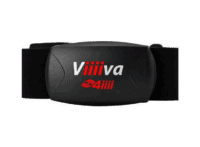 | 4iiii Viiiiva ANT+ to Bluetooth Smart HR Strap & Bridge $79.00 | $79.00 | Amazon |
| Polar H6 Heart Rate Strap (Bluetooth Smart Only) $58.00 | $58.00 | Amazon | |
| Polar H7 Heart Rate Strap (Gym equipment + Bluetooth Smart) $60.00 | $60.00 | Amazon | |
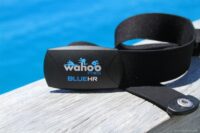 | Wahoo Blue HR - Bluetooth Smart Heart Rate Strap $69 | $69 | Amazon |
Thanks for reading! And as always, feel free to post comments or questions in the comments section below, I’ll be happy to try and answer them as quickly as possible.



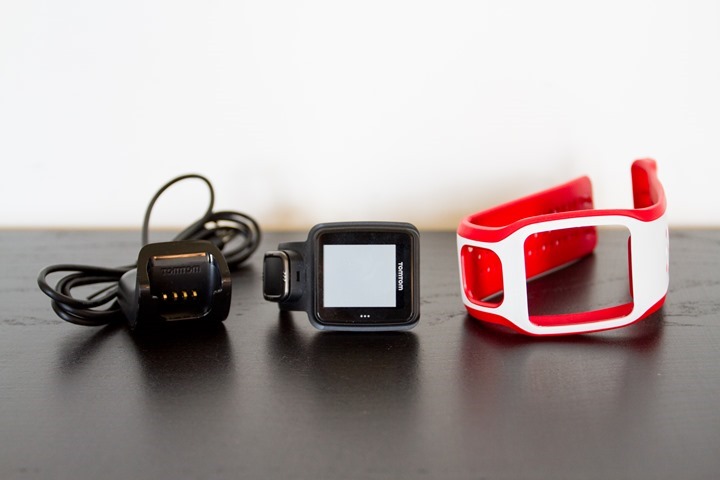
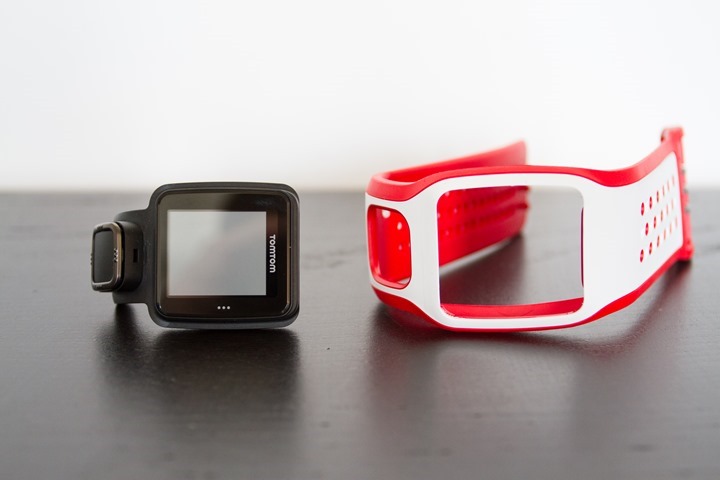
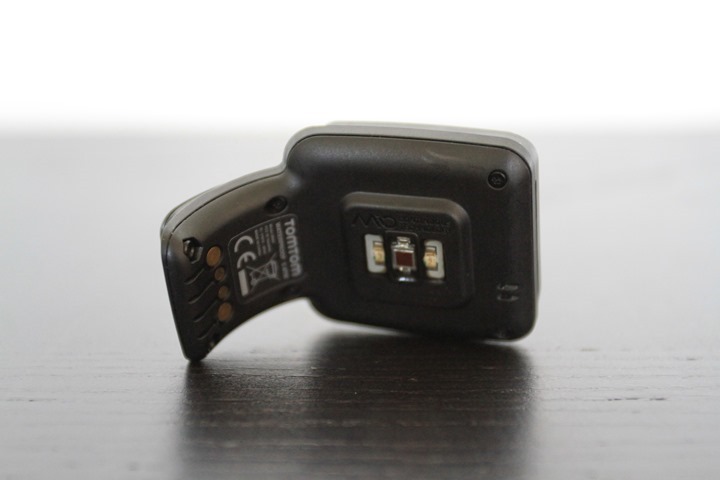
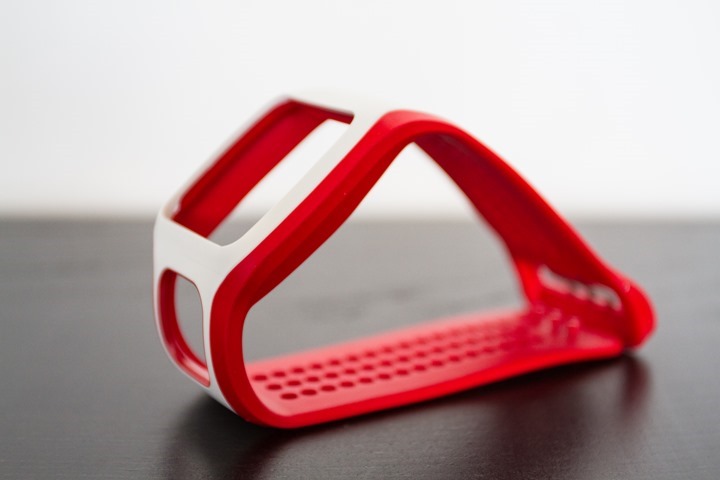
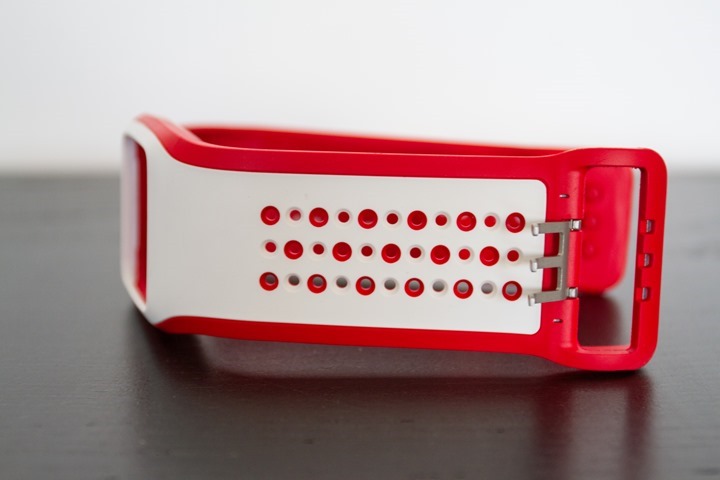
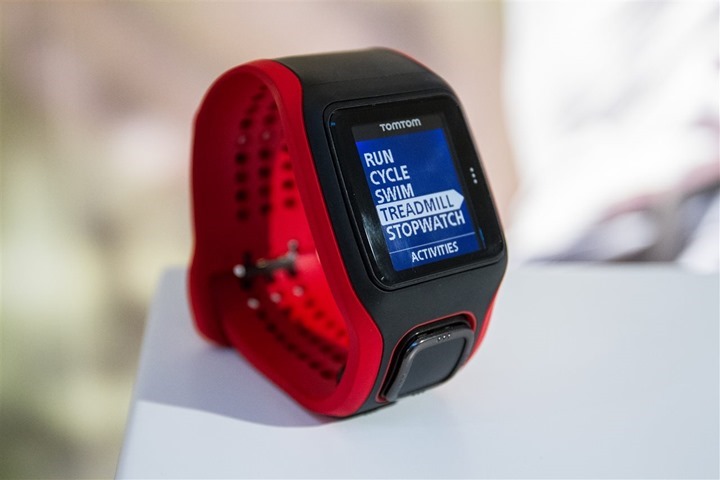
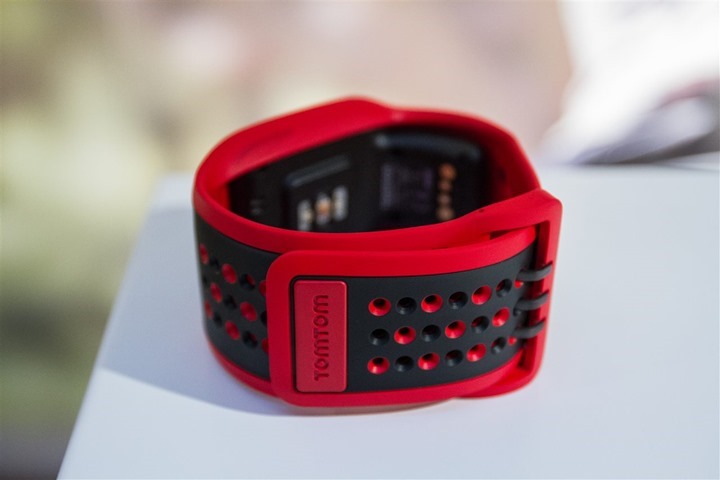
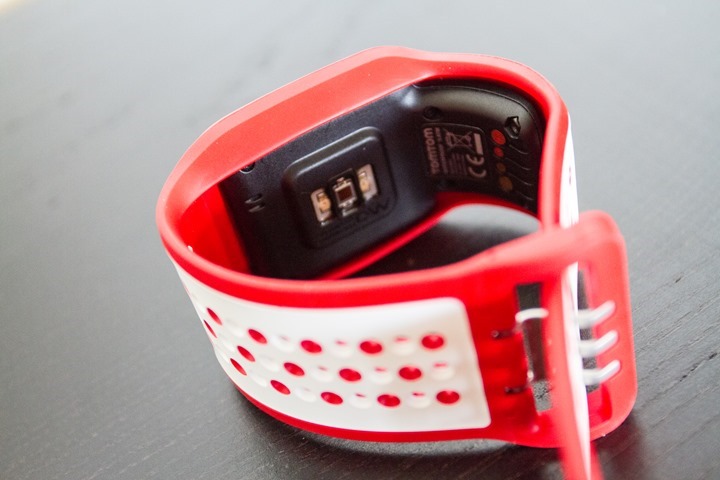
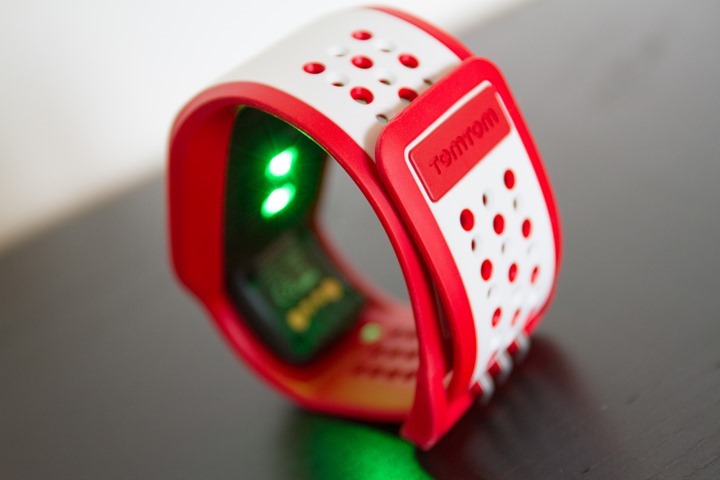
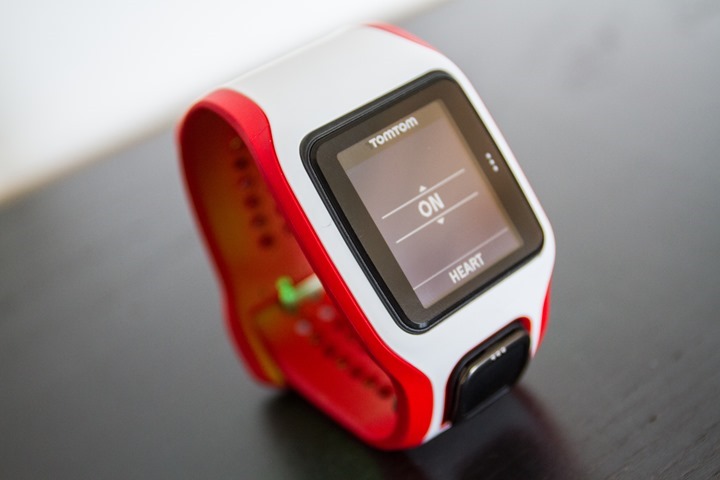

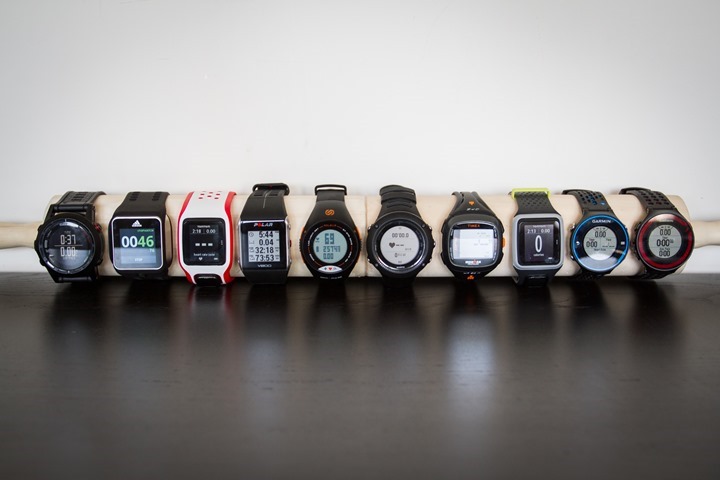
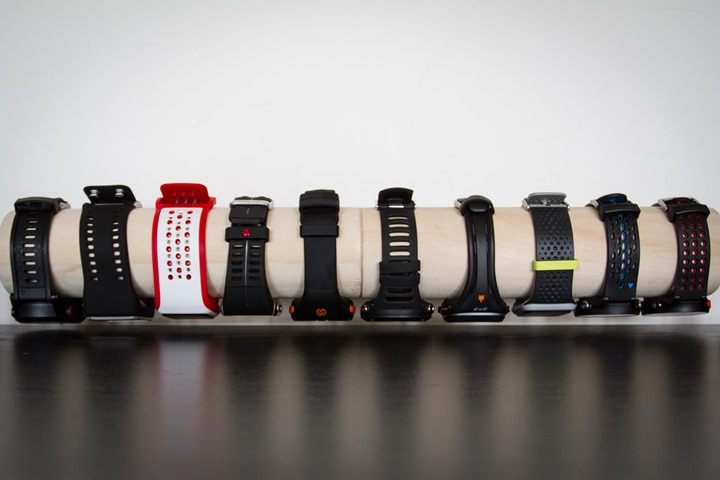
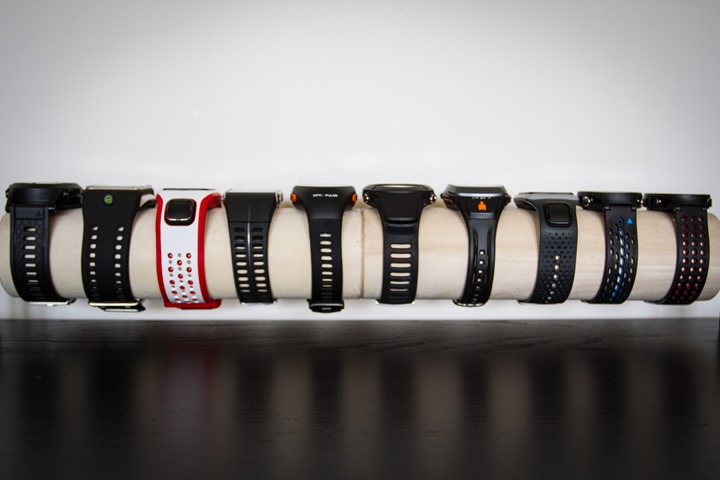
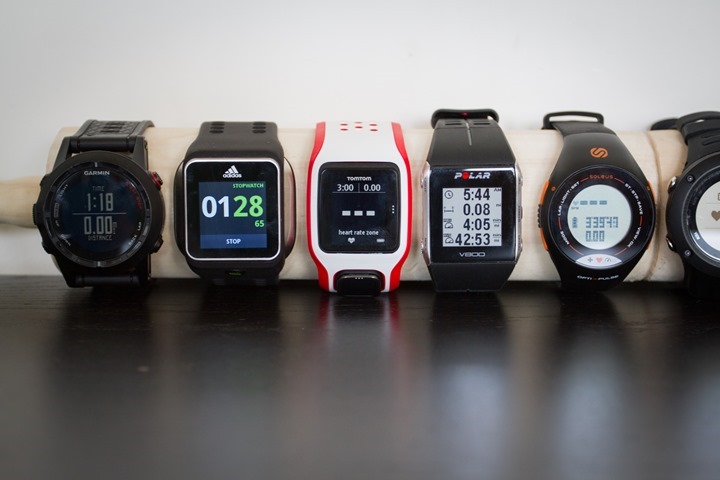
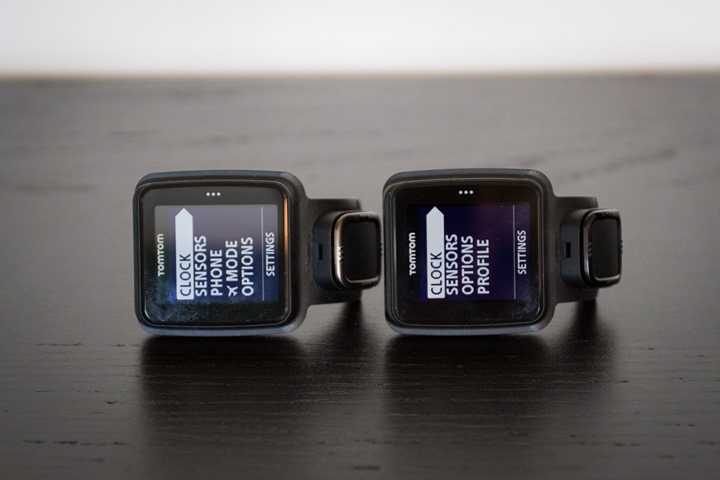
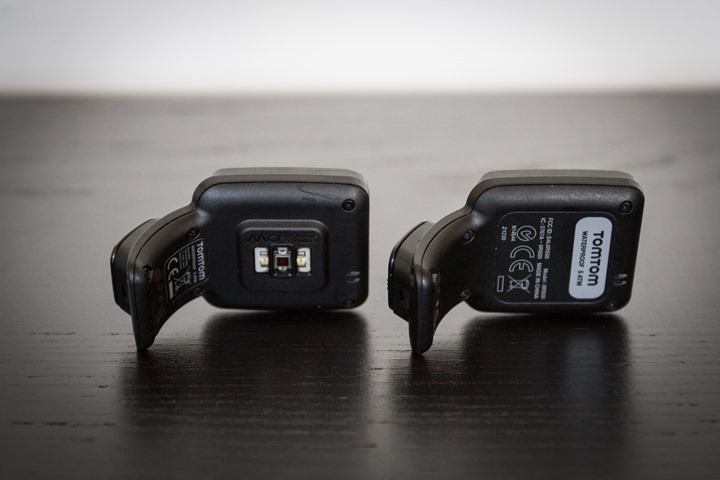
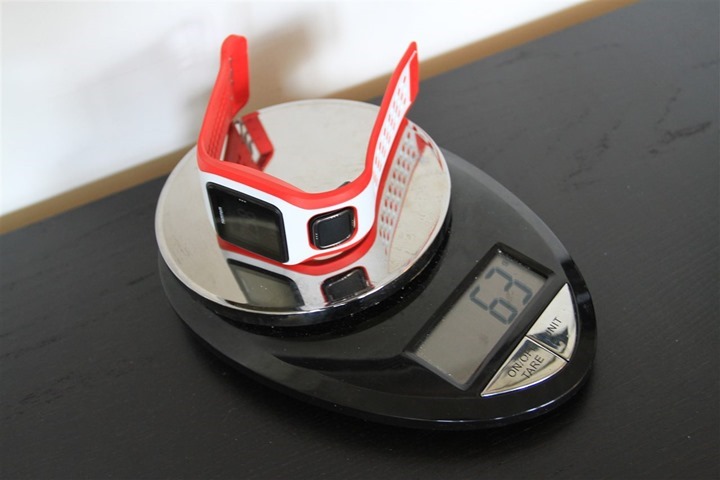
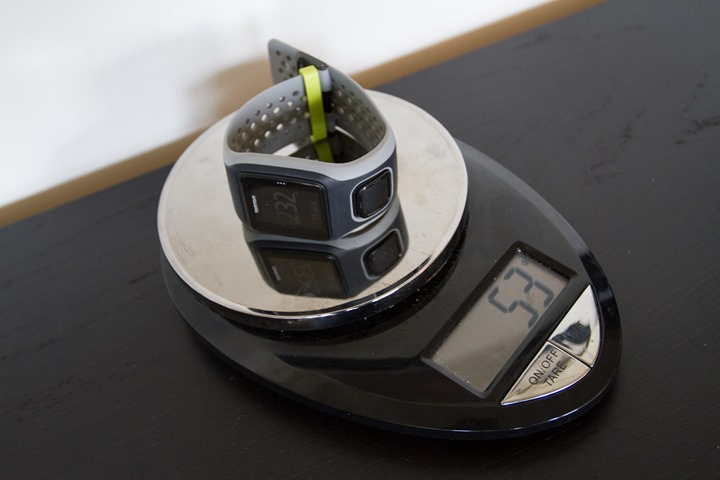
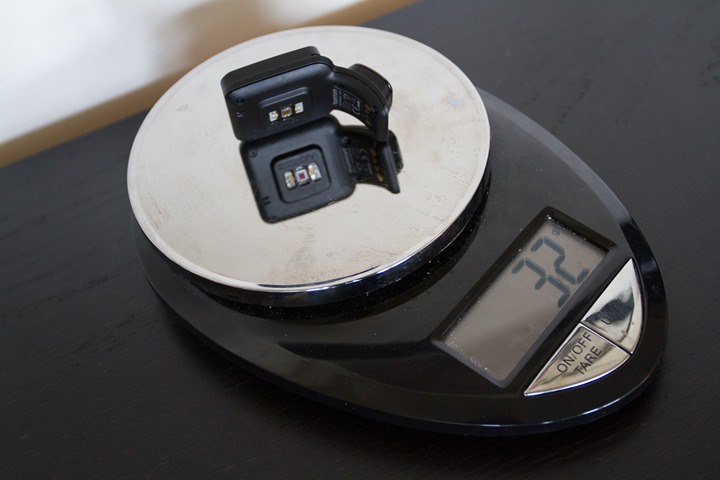
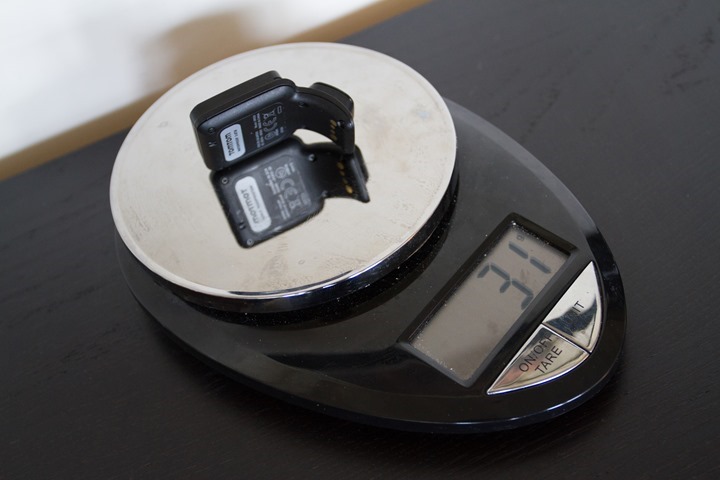
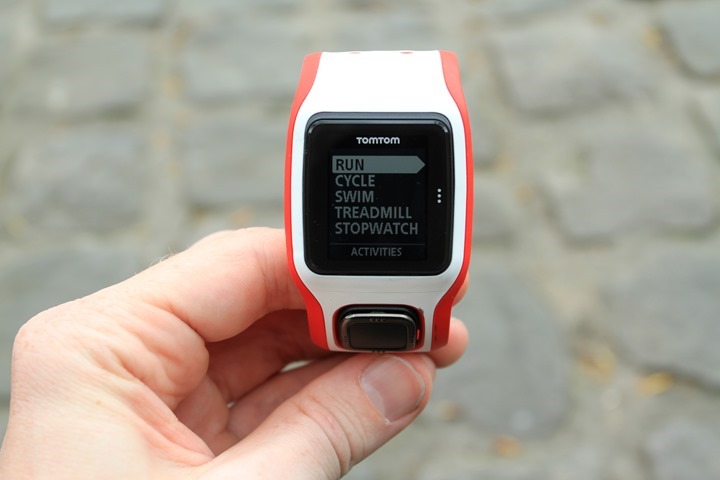
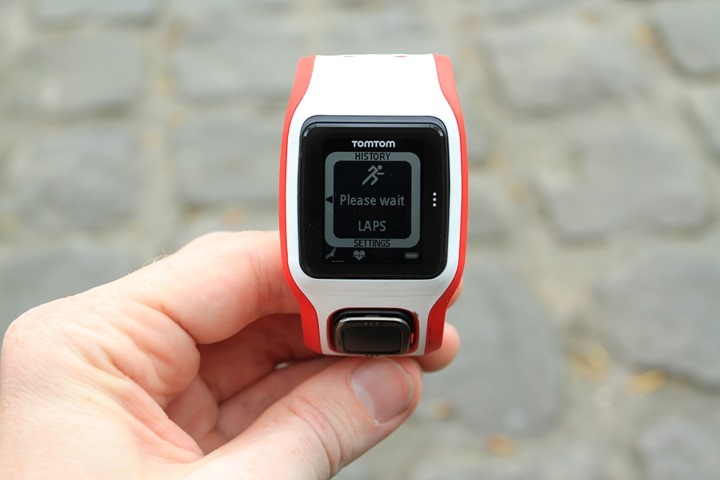
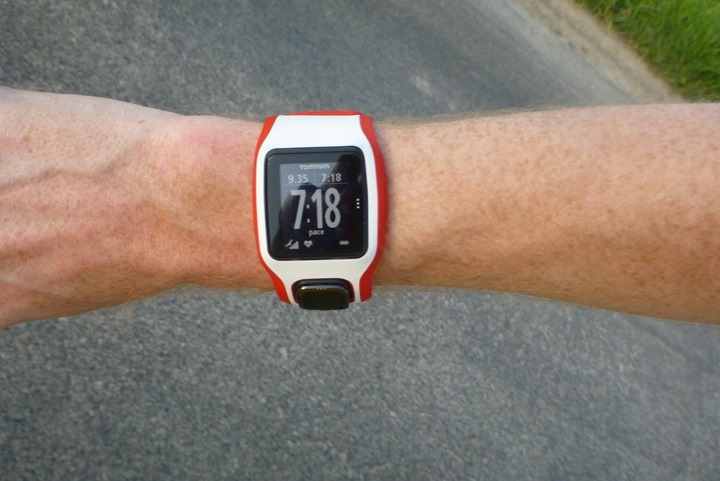
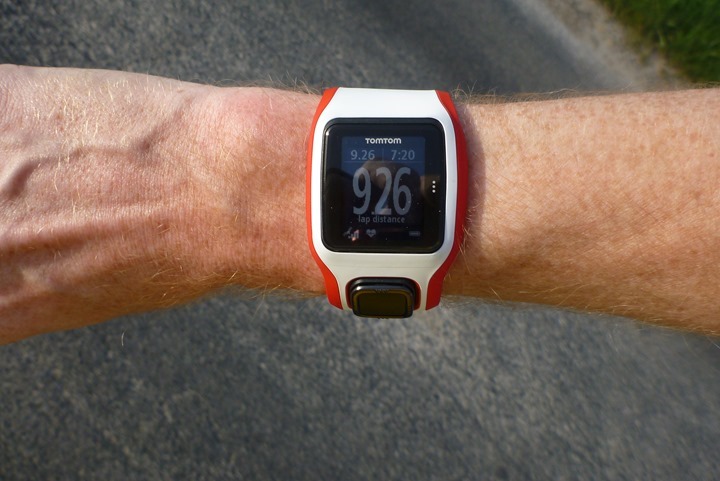
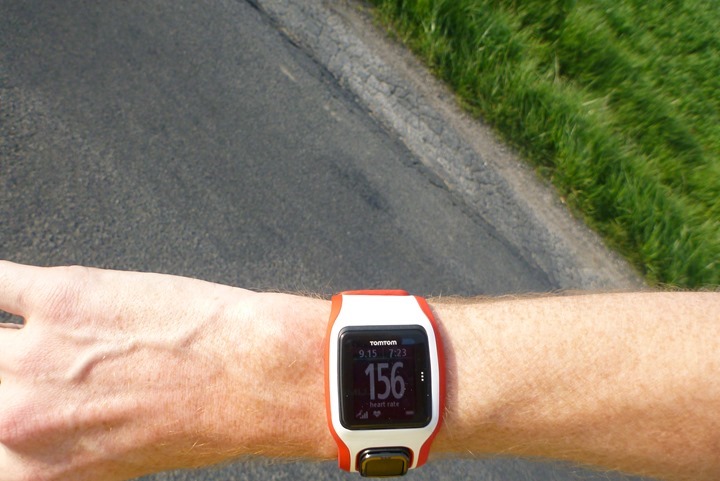
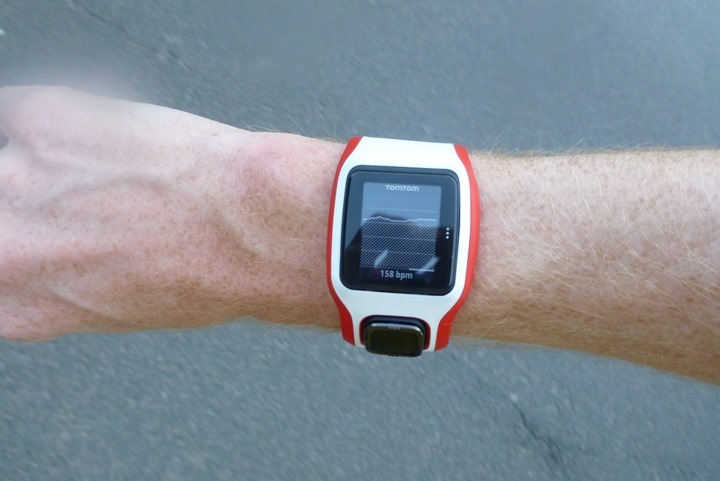
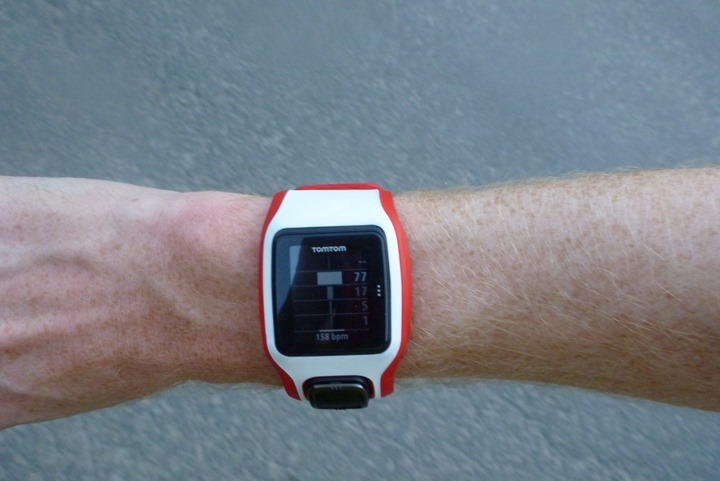
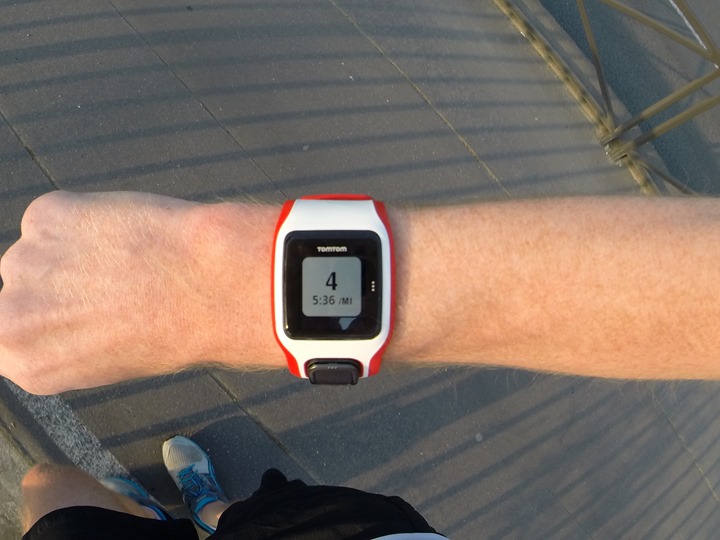
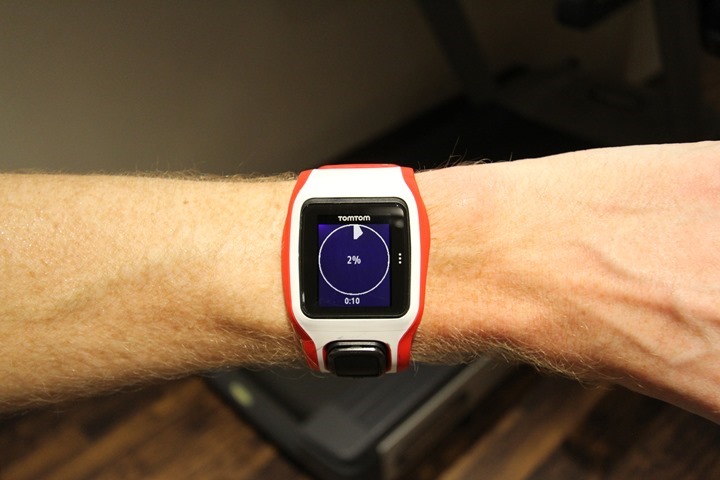
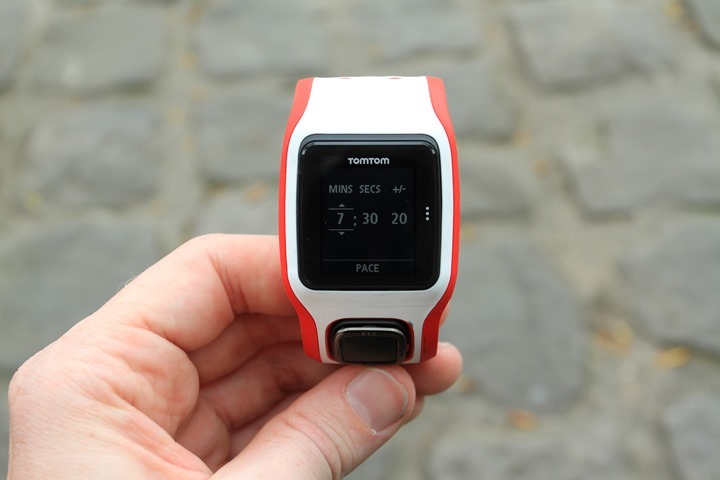
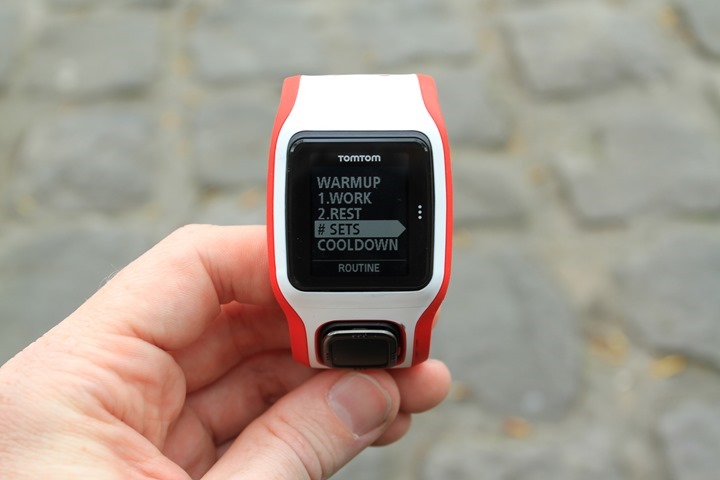
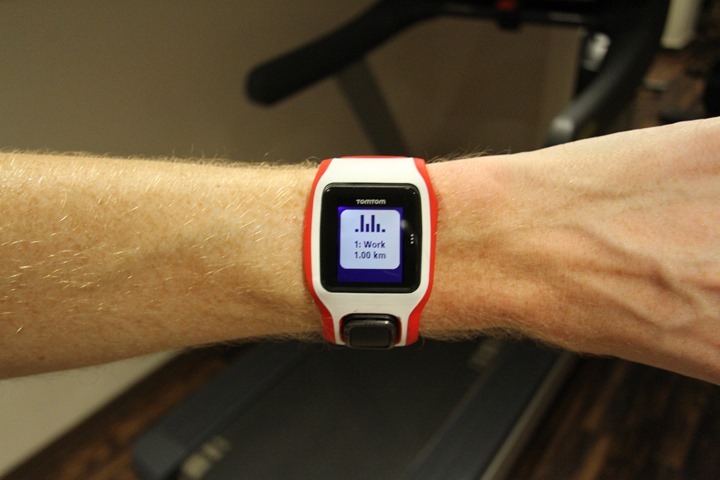
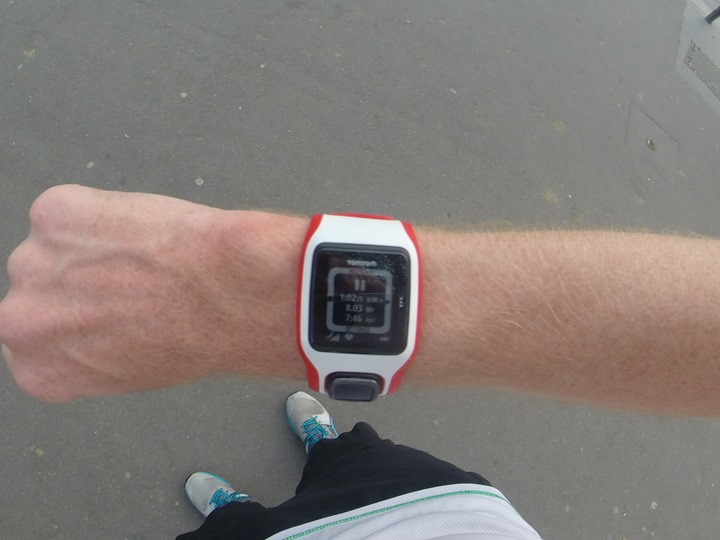
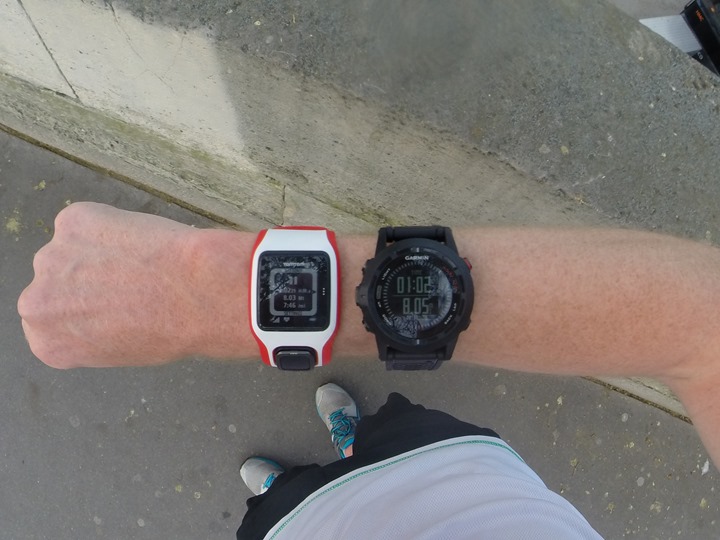
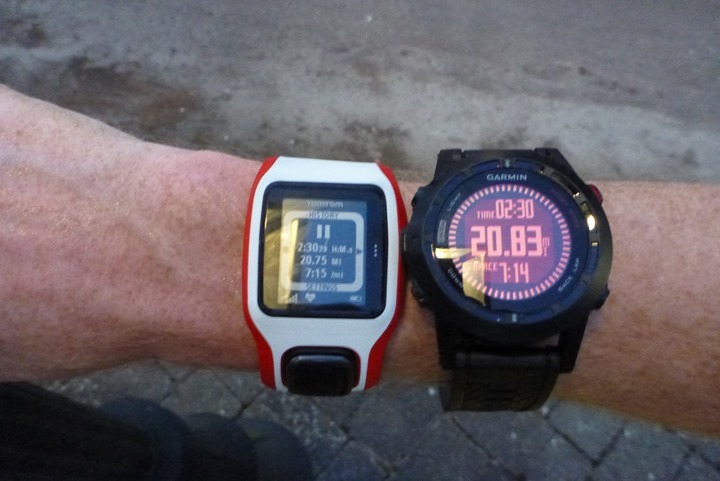
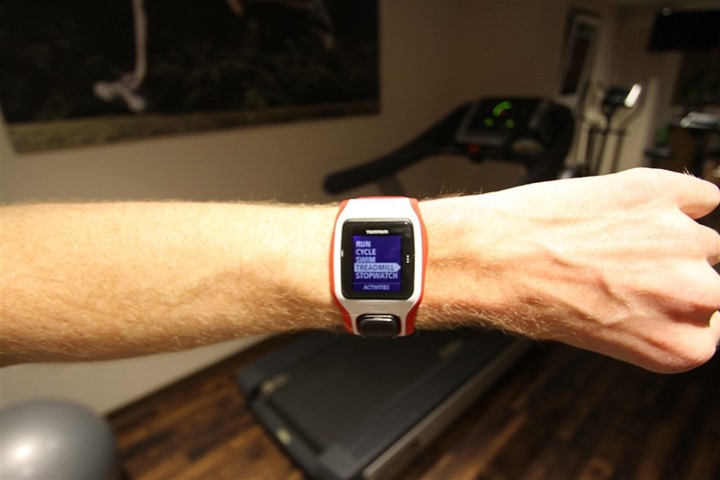

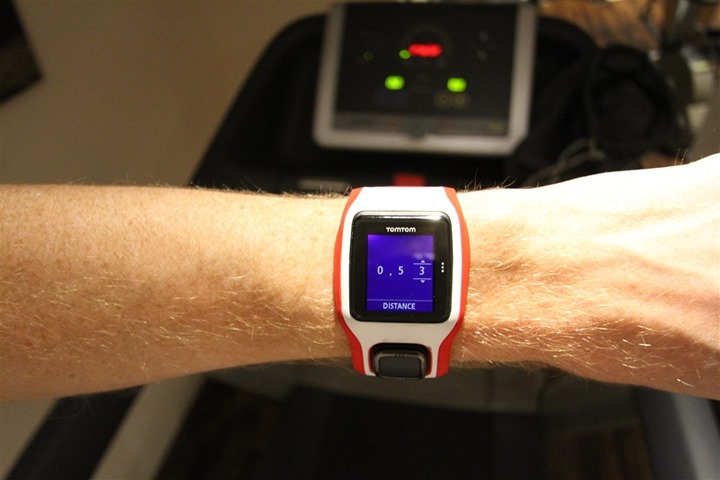




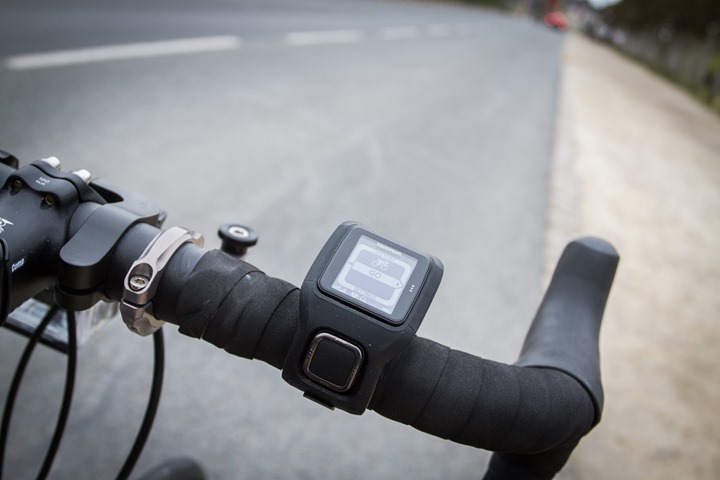

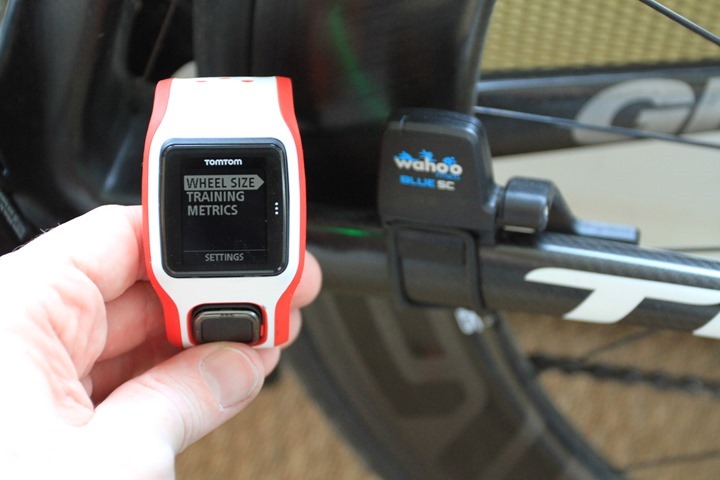

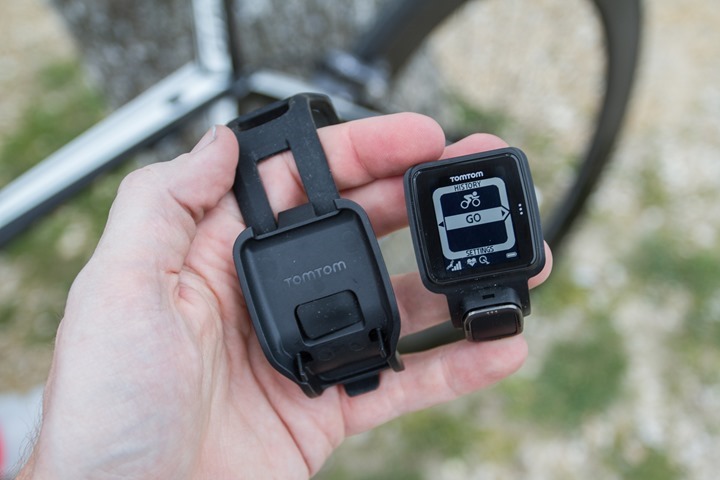
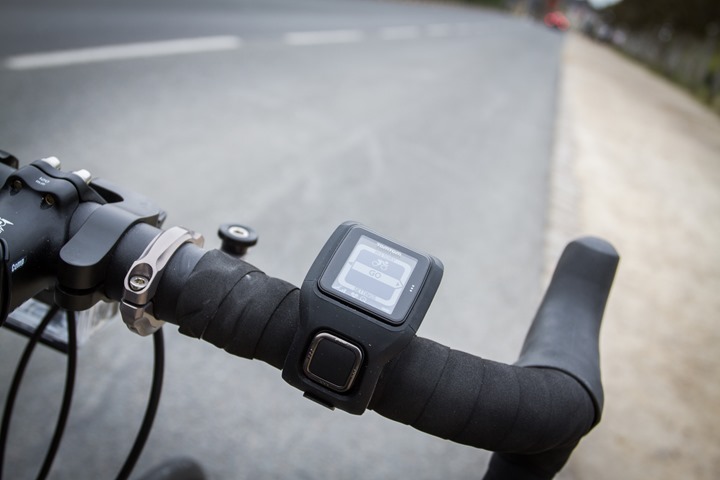

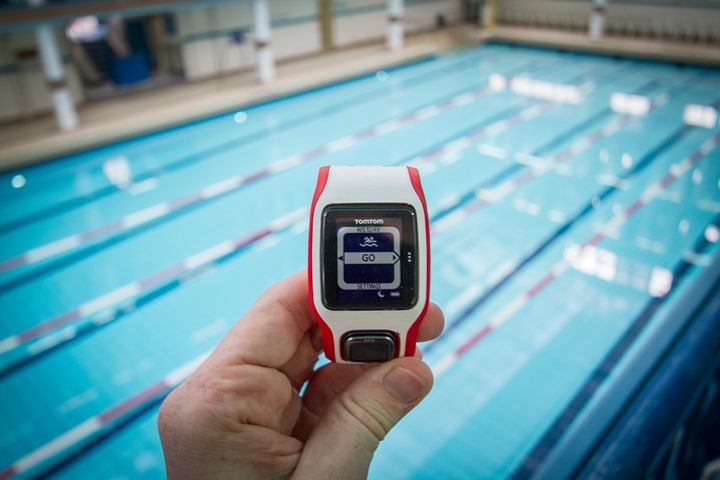
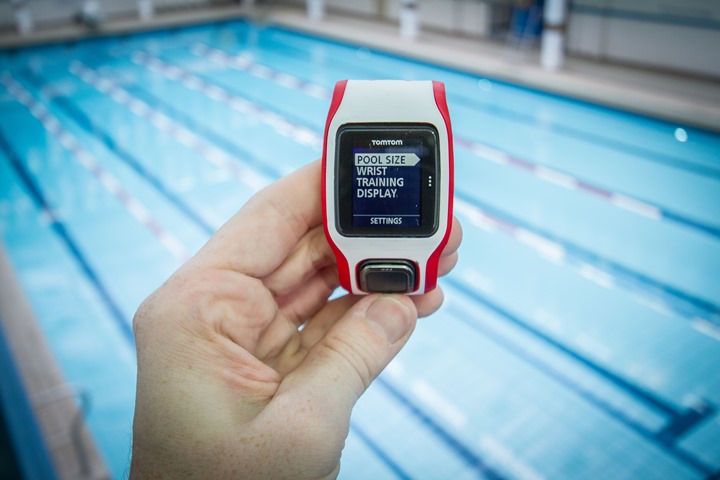
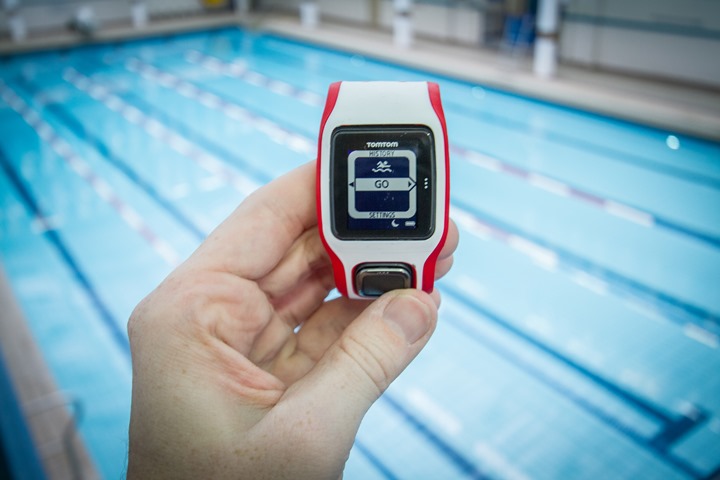


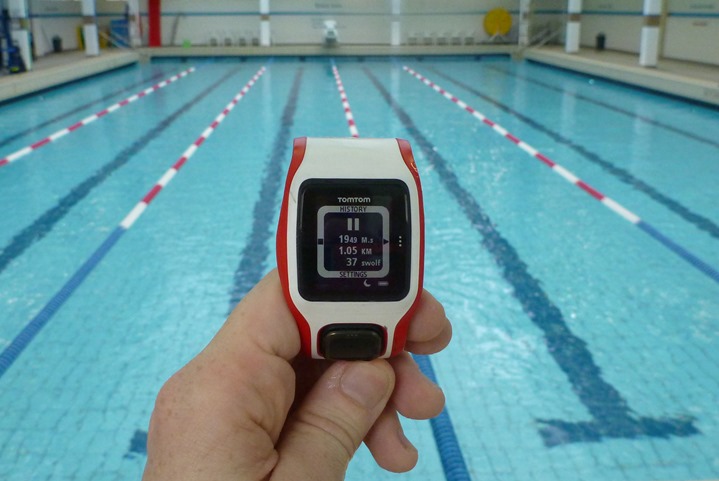


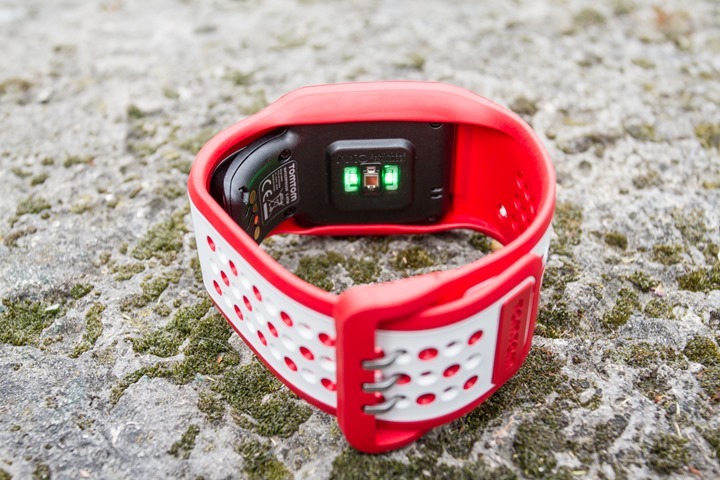
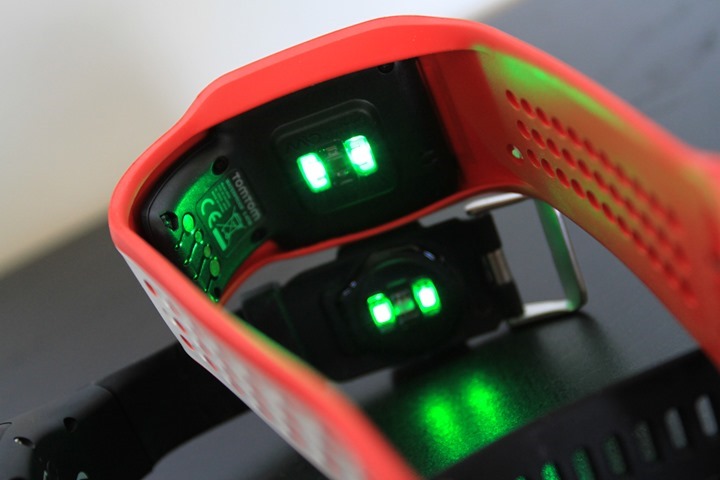








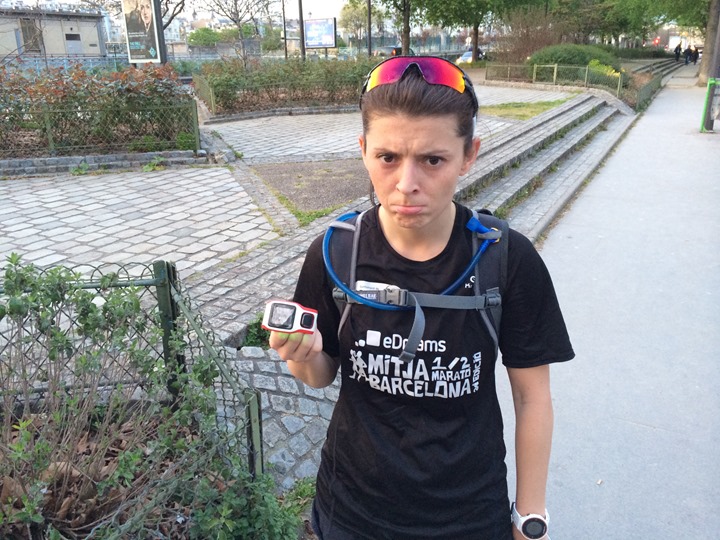
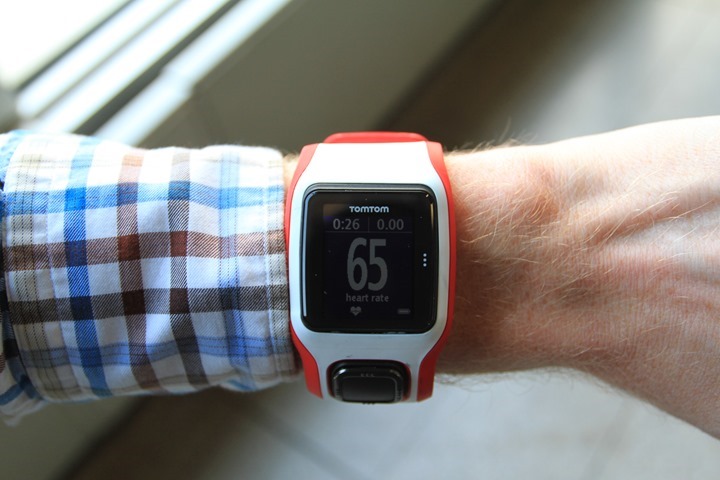
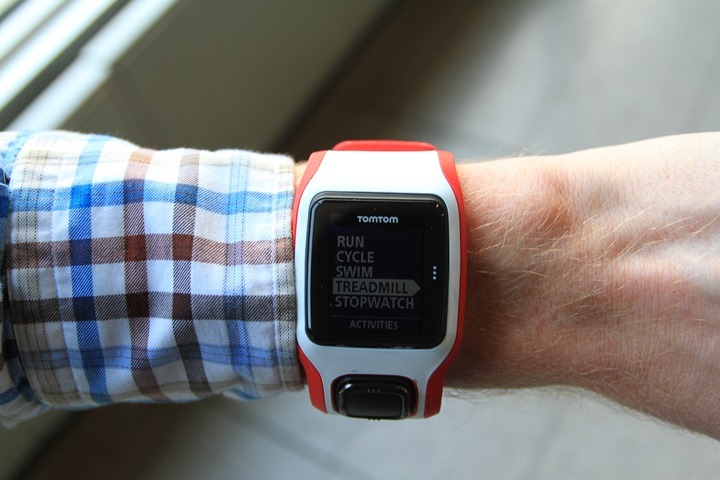

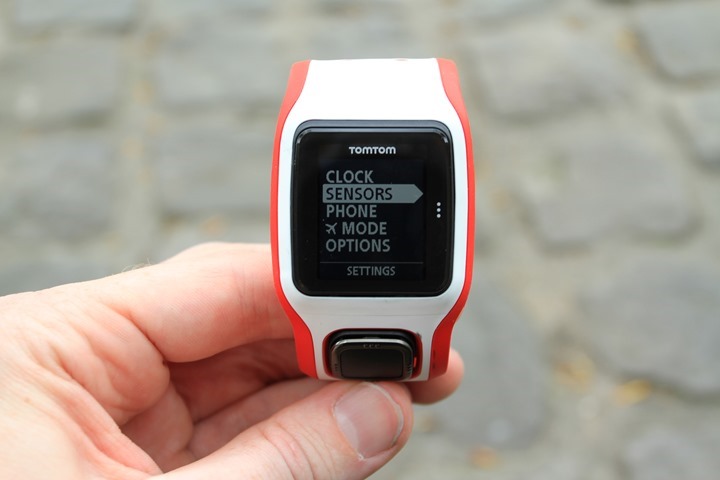
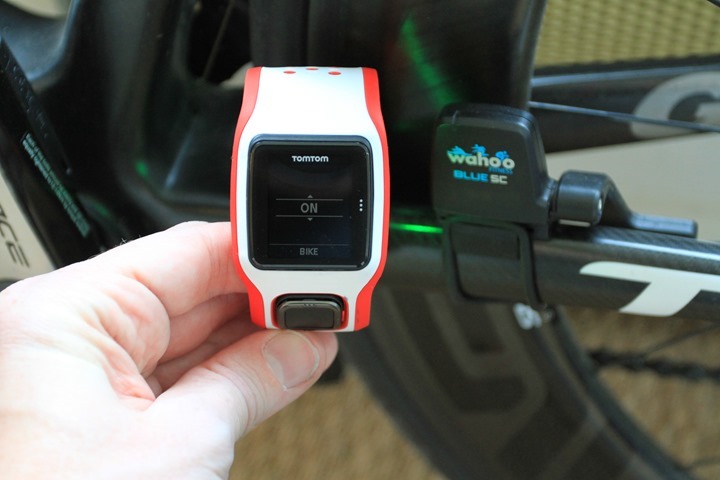
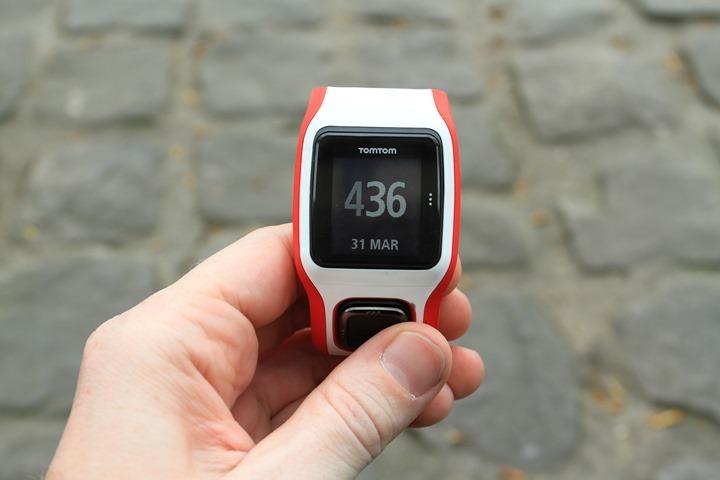
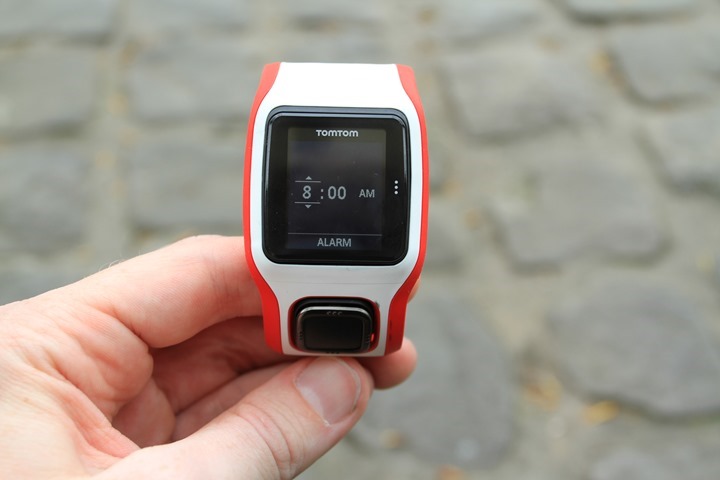
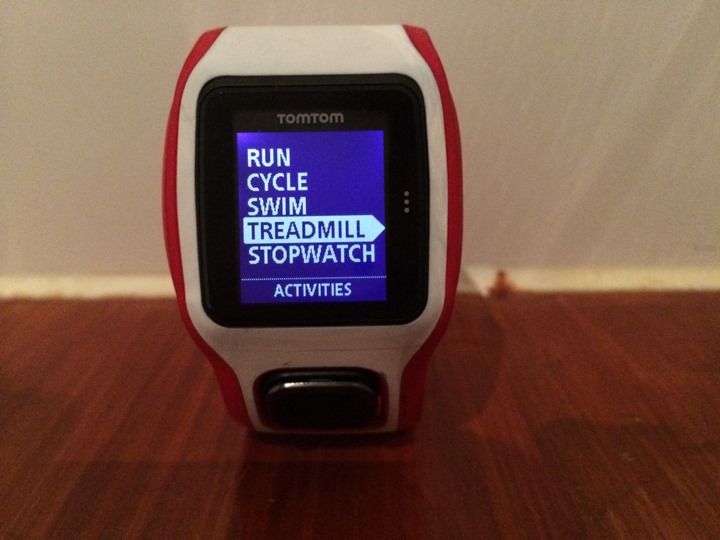
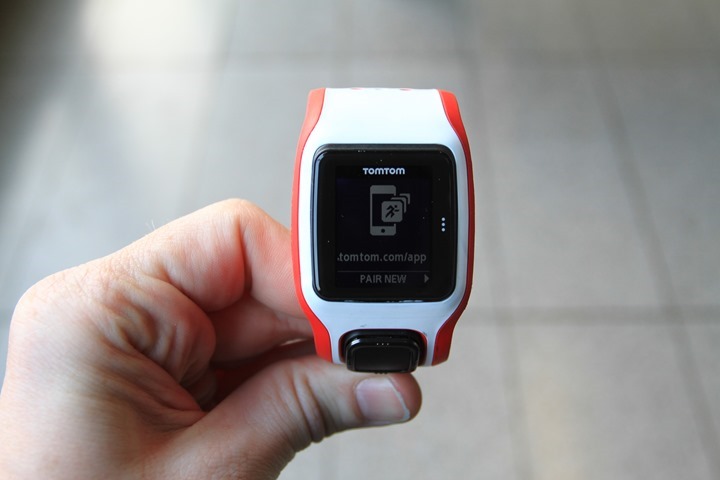
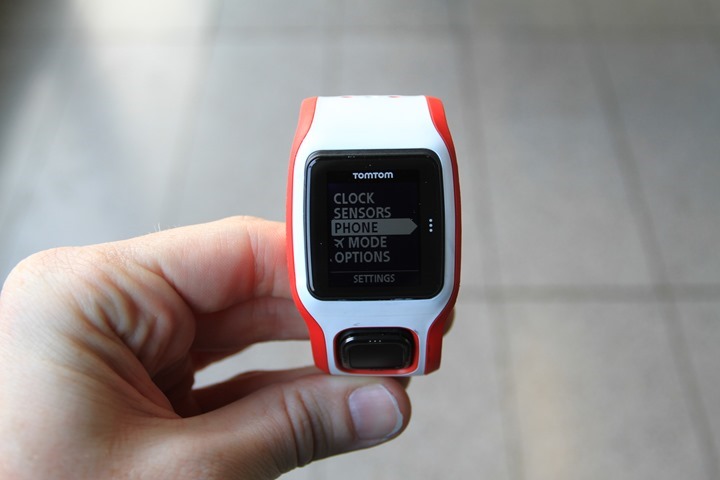
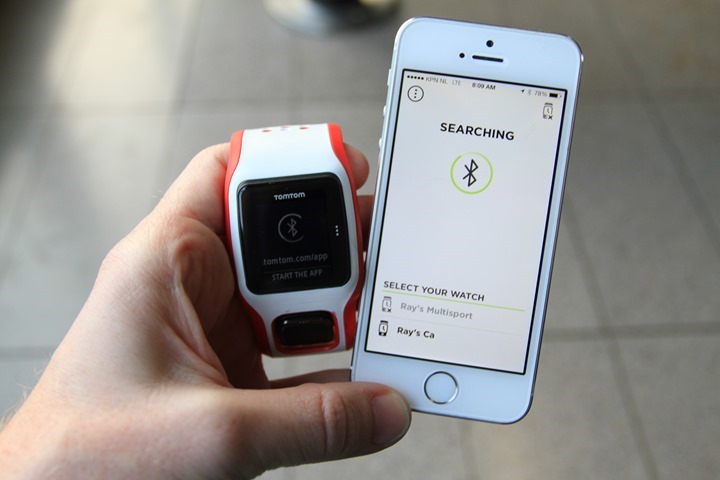
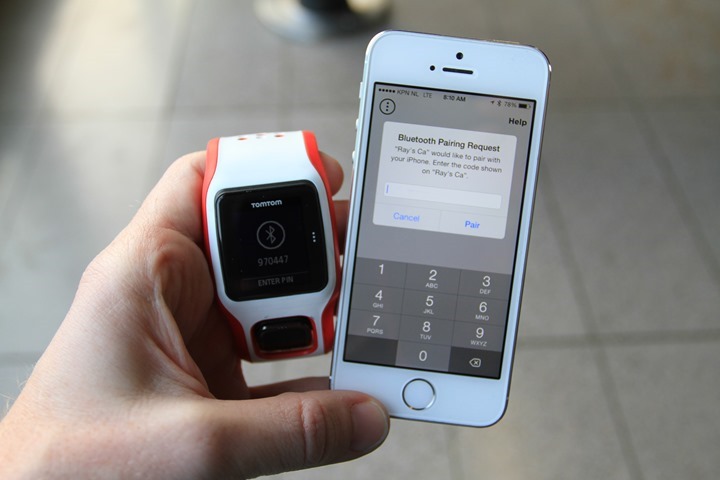
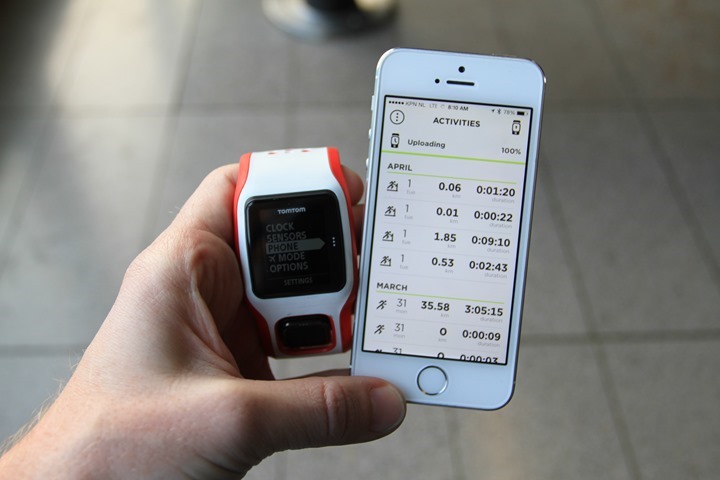
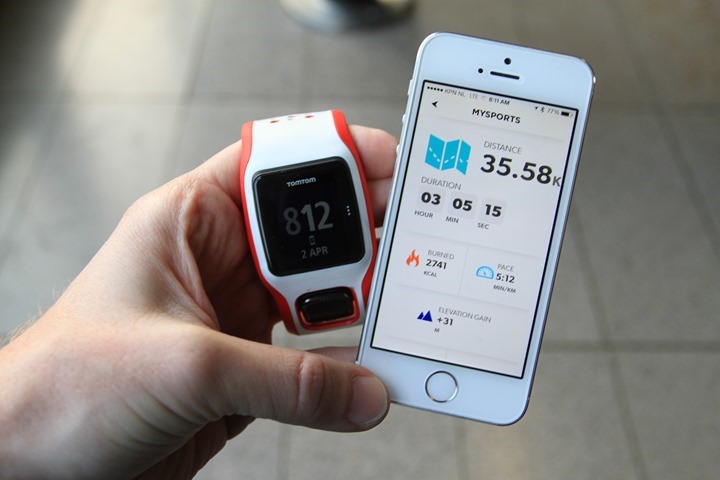
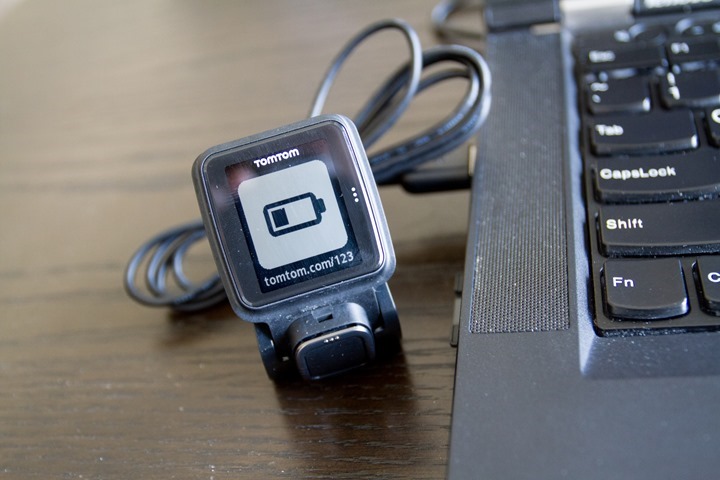









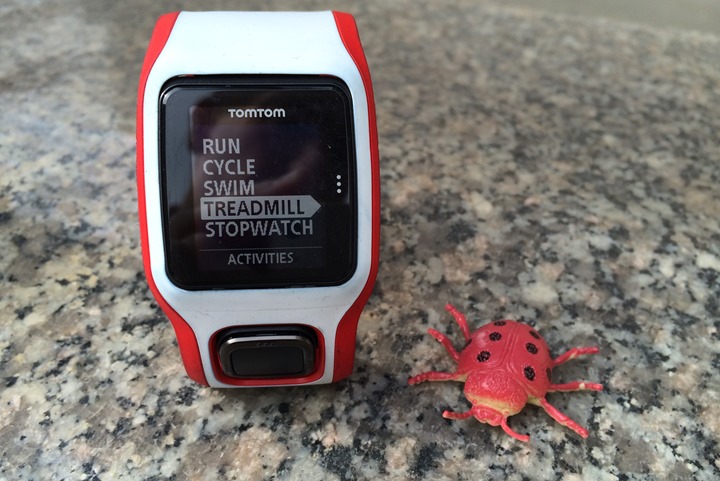
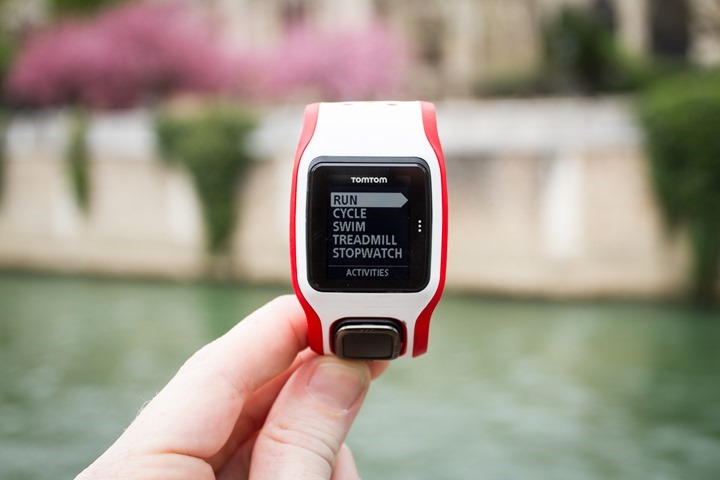



















Thanks for the great review Ray. I’m thinking of buying the watch (I can get it for 180 euro’s) but knowing it came out 1 year ago I’m a bit hesitant and a little afraid that TomTom will release a newer model very soon. What’s your advice on this..Do you think there will be a newer model released very soon? Or should I just get the “old” one for the discount price I mentioned of 180 euro’s?
It’s hard to say, since we don’t have much of a basis for TomTom fitness models. Last year it was about a year apart, but you never really know.
Both TomTom and Amazon.com have dropped their prices to $219.99. Wondering if a new model release is imminent? Hope not.. just bought one a week or so ago.
Yea, I get the feeling there will be a new model soon. Heavy discounts at Clever Training, TomTom.com, Amazon, etc.. and the timing is just about right:
TomTom Runner – July 1, 2013
TomTom Cardio – April 2, 2014
With the strong performance of their optical HRM and (surprisingly) accurate GPS tracking, the addition of activity tracking and a bit more customization would make their new offering an extremely intriguing option. My guess would be throw in a bit of a color screen as well. We will likely see soon.
Also, apparently TomTom is launching new products today: link to websta.me
The discounts are only for about 3 days this time, and part of TomTom’s semi-frequently discounting of units (about every 2 months).
Also remember the iwatch has needed was just released into the wild. Could have an impact in lowering prices.
Now that the embargo has passed, the TomTom announcement is related to their new action camera. Full in-depth review here: link to dcrainmaker.com
Since I updated my phone to Android 6 the TomTom “My Sports” app has been refusing to talk to my TomTom Cardio Runner watch any more. The instructions on TomTom website (uninstall app, factory reset watch) do not solve this. I have an email from TomTom support saying they know there are problems with their App on Android 6 but have no timescale for resolving them. Can this be right? It seems weird that they would remove functionality from users of the most up to date version of Android. I’m not trying to bash TomTom here, just to get back the functionality it was sold with.
Hey DC,
As always an epically comprehensive review, really appreciate the time you take in your reviews.
I have 2 quick questions.
1.) Do you have any experience using this watch on ghost running mode. I’m a competitive chap and I heard that you can race yourself based on a previous recorded run. – Any opinions on if this works well.
2.)Open-water swimming have you tried using this thing out in a lake either in the swimcap or on your wrist. If so what were your thoughts?
So here are some comparison numbers I have noted between the watch in cycling mode with and without HRM running. Going the same distance to and from work with the wind in my face on the ride home, I netted roughly the same calories burned (463 at 5.79 miles NO HRM/446 5.99 miles with HRM). I think the reading was lower with the HRM because it was so windy I was going a bit slower getting home. Now here’s the odd part…those are mysports numbers. When I load them into endomondo, the mysports numbers stick at first. But when I change the endomondo settings on both to Cycle Transport (or any other cycling option), the with HRM numbers jump to 611 calories burned while the non-hrm numbers drop to 449. The latter isn’t a significant drop, but that difference between the with and without HRM is kind of big. On a positive note, at least you can manually edit it to account. I will say on a bicycle, this band is cumbersome on the wrist. Anyone who wants to use this for cycling, I recommend attaching it to the bars and getting a mio link to grab the heart rate data.
Only one real con to this so far: It has managed to go into a BSOD mode at least twice since I have owned it. This requires the unit to be connected to a PC in order to restart. While data is retained, I have lost a few rides as a result. Having the proprietary charger on hand is a PITA. A microusb option would have at least left me less annoyed.
I don’t think I’ve ever heard of a BSOD on the TomTom unit. I’d definitely hit up TomTom support to try and get that sorted through.
(Reason for not using Micro-USB cable is that it wouldn’t be as well waterproofed)
Makes sense on the charging side. By BSOD, it twice has gone into a freezing state and it shows an icon to hook it up to the laptop. After the first time, I contacted tomtom and they said the only way of getting it out of that state is connecting (no hard reset unfortunately). They did say to contact them if it happens again for a replacement. Will probably do it if it happens a third time.
thanks for your work
based on this page i decided to buy one tom tom multisport and i am very happy with it. it does what it says it will do and no strap on the chest is the best feeling.
1) when one does spinning class is it better to use freestyle (for i hear it counts calories based on heartrate on this mode)?
keep up the good work
Hi advaita, Yes, that’s correct – in freestyle mode your heart rate is used for calculating burnt calories. For spinning class it would be good to use the watch in freestyle mode since it doesn’t use GPS. I hope this helps. If you have any more questions please contact our Customer Care team via direct line 866 486 6866 or the following page: link to bit.ly.
Hi, I tried using freestyle mode for spin class today and I had an issue because it NEEDED GPS to work. It finally found a signal about halfway through the class. Is there a way to turn off the GPS during freestyle mode?
Sorry if you’ve answered this already, no amount of ctrl-F has helped because these words come up so much:
Have they enabled swimming HR recording?
If they have, I’m buying!
Thx, Rich
No not yet
I bought one beginning of April – and for me, the HRM is a bit hit and miss. it will drop to about 20% of what it should be in the middle of a run… happened on 3 out of 4 runs, and dropout on one of the runs was for most of the 45 min run.
TomTom support suggested a factory reset but made no difference. I got an exchange unit from the retailer and used it yesterday. HR was only properly measured 3km into a 20km run, but was at least consistent after that. Let’s see how it gets on over the next week – else it’s going back for a refund. Only makes sense if the in-built HRM works – I bought it cos I dislike chest straps…
Now returned to shop for refund. TomTom support were helpful up to the point where they suggested that it was slipping and I should tighten it.
The Scosche Rhythm+ looks interesting – can wear it further up the arm, uses 3 LEDs, but I read mixed reviews on that. The Apple Watch has changeable brightness of the LEDS – I suggested both of these remedies to TomTom, and they were quite receptive.
I still think it’s too early for the optical tech in consumer application. I’ll wait to buy again until the products mature again.
Does anyone know if intervals are recorded as separate laps yet? And is it any different when the activity gets to Strava? I’d like to see an intervals session from this watch on Strava.
This watch sounds perfect, but that’s a deal breaker for me.
I was wondering if it’s possible to pair this watch to two different phones, and subsequently two different profiles on the tomtom MySports site (or app)?
My wife and I are both currently training for events and as we’ve small children the chance of going out together is almost impossible. If we can use the one watch and then just pair to our phone each time (without getting each others runs uploaded) that would be great.
The issue i have with the watch is that you can’t bike with it while having it on your wrist. I have had the multisport from the first generation without the heart meter inside it. The problem is that the control panel breaks through pressure. So you have to put it into the rubber holder. Which requires you to use a heart meter on a bike. So really the only plus side of the watch over the older model is for the running department.
What i do have with a heart meter is that the heart meters on your body start to cut into my skin after a while, with this watch that problem will be solved but also be replaced by heavy pressure on your wrist from the extra bulk what you have discussed.
Upgrading from the older towards the newer model kinda seems useless then, for me.
Thanks for your review.
I would probably argue it is only useless if all you do is cycle…and possible if you already have an earlier model with a hrm.
Thanks so much for your great reviews on all of these devices! I am currently training for my first marathon and am looking to purchase my first activity tracker watch. Right now I have narrowed it down to the Fitbit Surge or the TomTom Cardio. Just wondering your opinion on which you would choose? I live out in the open country with miles of dirt road to run on and I must not be too worried about tracking my daily steps because I was given a Fitbit Flex and I hardly ever wear it. I appreciate any insight you can give me on these units or even if you recommend a different one, however I’m not big on the chest strap. Thanks again.
Brett
TomTom Cardio. The Fitbit Surge (check out that review), isn’t terribly accurate when it comes to HR during sport.
Thank you, means a lot to me. Sorry, I have one more question for you. I saw your recent post on the Garmin FR 225. Would you still go with the TomTom over the Garmin? Thanks again.
I am curious about this as well. Key differences seem to be that the TomTom will monitor HR continuously and the Garmin is on demand, while the Garmin tracks steps and the TomTom does not. Is there an option where you can get the continuous heart and the steps, but is good for a distance runner/cyclist?
I tried to find comments on the gps running speed accuracy but I couldn’t.
There is a strange flaw in the speed reading. The average speed seems to be accurate but the instantaneous speed is always some 5 % off. If I maintain my speed at a constant 6 min/km according to my TomTom Multisports reading, the average speed will remain around 6:15-6:20/km. This is strange because I have found the gps reading to be very accurate (error <1%), the time I assume is also accurate, so how can the speed always be off and always showing faster than actual. Has anyone else seen this?
hi
1 can you please explain about that of turning files into fit so one can see information like for example the laps one performed with the watch. sorry but i havent understood it
2 is it normal if the watch shows more “lenghts” than the ones you actually swimmed (i put in the right lenght of the pool)
thanks and may god always bless you
Hi advaitasiva,
To transfer activities as FIT files or any of the supported file types, you connect your watch to your computer and open MySports Connect. Select “Settings” to see the settings options. Then select “Upload & Export”. Click “Add” and select any file format (GPX, FIT, TCX, KML) or website. Once a new sports website or file format is added, all new activities are also transferred to that website or file format. I hope this helps. The above steps are also explained here: link to bit.ly.
Hello
Would you prefer the polar m400 or the tomtom runner cardio
Thank you
Sarel Prinsloo
Sarel Prinsloo – The two watches differ in a number of ways (with their respective reviews pretty much covering this ground), but at least for me the most significant difference was that the TomTom Runner Cardio has an integral heart rate monitor, and the Polar does not.
Since heart rate monitoring is of at least moderate interest to me, and I really dislike wearing a strap around my chest, I went for the TomTom.
Okay, what clinched the deal was that there was a TomTom Runner Cardio, in like new condition, on my local craigslist, for $99. :)
Hello. Do you know if it works with the stride sensor Polar Bluetooth® Smart ?
Hi João Roso, you can find a list of compatible sensors on the following page: link to bit.ly. If you have any more questions please contact our Customer Care team via direct line 866 486 6866 or the following page: link to bit.ly. Thanks.
Hi DC and all – this is a great site.
I currently have a Garmin Edge 510 and GC10 speed/cadence sensor and up until very recently I had a Fitbit Surge – it’s GPS started playing up and then one of the LEDs for the optical HRM died so I took it back. However, I am now very much interested in HRM data, and have started running and wish to do a sprint tri (or many) and possibly an Olympic distance one before the year is out. I am now trying to weigh up what I should do:
1. Sell my Garmin stuff, and buy a TomTom Multisport Cardio and a Wahoo SC sensor; or
2. Sell my Garmin 510 and buy either a Garmin Vivoactive or Fenix 3 (maybe a 920) and a Scosche Rhythm+.
I am leaning towards option 1. as its one less thing to keep charged and carry with me etc but I’d still probably want a cheap speed/cadence/distance display on my bike’s handlebars. Are there any cheap(er) models that can connect to the Wahoo SC via Bluetooth Smart?
Am I trying to be too explicit with my requirements, should I just go the Garmin/Scosche route and throw the watch on the handlebars when I ride?
Thanks in advance
Geoff
you could equally go with the TT Multisport non-cardio version, and the Rhythm+. That’s the option I’m currently considering after returning my Cardio.
Thanks. I take it that you were quite happy with the watch except for the HRM issues you had with it?
Greetings Rainmaker
I just started running this past week…in which I have run without any technology. I am very new to this as I usually play recreational basketball for my cardio workouts but since running with a group of runners I have been pretty excited about running lately. On my first run of 5 miles, I noticed everyone used some type tool to aid in their run albeit it was a smartphone, GPS watch or both. I had no idea about any of this stuff beforehand but since then I have been really interested. I initially looked for a gps watch and then realized that these watches were not that cheap so I wanted to find one that was pretty cheap but good and could be considered a beginners watch. I found the Garmin Forerunner 10 and BestBuy was selling it for $80. After researching a few reviews I decided to purchase although I have not really used it as of yet. However, I talked to a friend that I run with that is heavy into running and he stated that he has a brand new TomTom Cardio Runner and he would sell it to me for $160 which appears to be a good deal. So now my dilemma is choosing between the two. I actually am really considering attempting a half marathon this year and the near future so I am wondering if the extra $80 for the TomTom Cardio Runner over the Garmin FR10 is worth it. I even considered a Smartwatch like Pebble but saw a few too many drawbacks to the watch and also using the Smartwatch/smartphone combo so that idea is really dropping in the rankings. Please share your thoughts as to help me in my decision making in this case. Thanks.
great review
appears much better than fitbit
1. has mio sensor which is good for hrm
2. can upload data
Query is it compatible with polar beat on iphone and/or computer-web
Wonder if it si compatible with ITHLETE heart rate variability, hrv, sfor athletes – monitor, which apprently takes any bluetooth 4 enabled device
Some folk recommend hrv for training – go light if hrv relatively lower
I am not an athlete and my hrv vaires a lot but does not seem related to my performance on rowing machine
I learned more from your review than the Tomtom website. Thank you for taking the time to do this.
I just noticed the price went down to $199. At that price, it’s a no brainer. Off to Clever I go!
Thanks for the review – very detailed.
A simple question. Can you get the strap for the Tom Tom multi sport cardio in all black?
Thanks
re getting an all black strap for the TomTom Multisport Cardio –
I found such a strap listed at amazon, fwiw. link to amazon.com
Does the new multi-sport cardio come in all black?
Thanks for your review – outstanding work.
Thanks for the great review. I find your review in line with my experience using TomTom Multi-Sport Cardio, although I have not used all of its features.
I started running since late Dec’14 and I am almost 50 years old, so I don’t run long distance. I normally run about 60 km. in a month. I usually jog at night for 3-4 nights every week for about 30 minutes each.
I’ve been using the watch for 4 months now. So far, I’m quite happy with it and, in fact, I now use it as my regular watch (instead of my Breitling and Rolex). I do like the built-in GPS and HRM so that I don’t have to carry a phone or use HR strap when I run. I like that the data can be uploaded and automatically linked from TomTom website to other sites e.g. endomondo, Nike+, etc. I think endomondo website offers much better features than TomTom’s MySports, so I prefer having all my records kept there. The optical HRM works well, it has never failed on me so far. Since each of my run only lasts for about 30 minutes, battery life is not an issue for me (I had GPS, HR and Night Mode activated). However, I went out for a round golf one day and used freestyle mode to keep track of my walking (I forgot to turn off the “night mode”). The battery went dead in just over 3 hours. So, I don’t know if the battery would last 8 hours as claimed by TomTom if the night mode is off.
There are a couple of annoying issues I have seen, though.
1. Locating GPS before the run sometimes takes forever (I did wait for about 3-5 minutes in many occasions). Once it did, it worked fine. Typically, the GPS is locked within seconds.
2. Uploading data to TomTom’s MySports via smartphone (Bluetooth) takes a long time (3-5 minutes) considering I run for only 30 minutes. I can’t imagine how long it would take to upload data for a much longer exercise. However, uploading via the USB cradle is fast.
Overall, I think the watch is good. It meets my exercise requirements and routines quite well. I just wish that TomTom’s designer had given it a better look. For me, I like the looks of Adidas Smart Run, Garmin Fenix, Suunto, but they don’t have built-in HRM (except Adidas, but the review was not so good). In my opinion, if TT can be used as a formal business watch, it would be a great watch.
regarding long time to acquire GPS : do not forget to keep quick gps file up to date : it expires after 3 days, which would result in the 3mn wait you witness. another reason for this would be traveling to far away destinations or full software reset: in these cases, the watch needs to find it’s new location.
Thanks for your reviews. I just found your site the past couple days as I’m researching watches. I’m trying to get (back) into ultra running, and would like to get a decent watch for training on trails, particularly with an optical (or other type of strapless?) HRM, if possible. And I don’t have unlimited money to spend. Are there other GPS + optical watches you might recommend in addition to this TomTom one? It seems from your review that you feel the Surge may not be good for workout heartrate, unless it’s been improved. Or, given your continued use of a traditional HRM, would you recommend against trying to get an optical one at all?
Another feature I’m particularly interested in, if I can have my druthers, is the ability to track vertical climb over a run, in case that’s useful for you to know. Thanks for any advice and thoughts!
Nevermind my above questions. I’ve learned a lot the past couple days–thanks in great part to your site–and realized I should probably get a watch with longer battery life and altimeter readings I can measure on the fly. And it looks like HRMs have become more comfortable since when I used them last decade. I was conveniently able to get the Fenix 2 performance bundle for just under $300 from Backcountry. I think that will better suit my needs, and better serve me in the future if I start using more advanced training features–which will now already be at my fingertips in the Fenix 2.
For another $20, is it worth it just to get the Multisport vs the Runner? I dont really bike/swim.. but not much difference between $230 and $250, just in case I feel like getting on a bike. Is the device basically the same?
AFAIK the hardware of the Runner and the regular Multisport is the same, only the software differs. There is a hardware difference though between the regular Multisport and the performance bundle Multisport, since the latter also have a built-in barometric altimeter (with which the watch can calculate terrain distance).
Hi Ray,
great review! I have three question regarding swimming:
1. What is the way of alerting the user about completing a “goal” in training (goal/interval/lap) (graphical/sound/vibrations – can this be set up?)
2. If it’s possible to set for instance an alarm every 250m – will it go off every 250m (constant alarm till I get out of the pool – just like Swimovate Poolmate Live)) or will I have to activate the training function every time I achieve previous goal?
3. Does the mobile app covers all swimming statistics that watch shows or is it limited as web page?
Thank you in advance for your help!
best,
Maciej
Will this watch work with the ?
Sorry asking if the watch supports the DuoTrap Seed/cadence sensor from Trek.
link to bontrager.com
Thanks for any help you can provide.
In theory it will (via the Bluetooth Smart channel), but I haven’t tested it (don’t have that sensor from them).
Hi Ray,
would you be so kind as to look at my comment above Fisk’s posted over 1 month ago? Much appreciated :)
best
Maciej
Thanks Ray,
Have you heard if TomTom has any plans to externally expose the heart rate sensor and the other metrics produced by the watch to the mobile application while a workout is in progress? Would be nice if I could use my phone to view the workout statistics while on a ride rather than having to get an external strap and mount the watch.
r/s
Fisk
I haven’t heard anything there. I just don’t see much updating going on with the unit/app/site unfortunately from TomTom’s side. It’s a solid watch, but I think one needs to buy it based on the assumption nothing is changing.
Maciej – I haven’t used it in a while for swimming, so I don’t know off hand. Perhaps another here might be able to fill in there.
Hi Ray,
great review!
Do you think that the 2015 August price drop is a sign that a newer model is coming out soon and they are trying to liquidate stocks?
My wife and I are looking to buy a running watch with a HR sensor on it, the new Forerunner 225 is very interesting but if Tomtom as something similar coming out, we can wait a few weeks for your review :p
Thanx!
Dave
I’m not sure. But they’ve been kinda doing this perpetual sale thing for a while. It goes on sale for like 3 weeks, and then drops off for a week or two, and then back on sale. I suspect at some point they’ll just admit it’s the new price and call it done.
thx for quick answer,
just discovered your site, it’s really solid, a lot of great info, a must for every runners,
thanks again for the very good job!
Hi Ray,
Repeating the standard opening phrase when saying this is a great review, but it’s not less sincere. Reallyall the info i’m looking for in a review!
One question remains though: do you have a view on whether the HR during swimming will be implemented still on this type through software update, or will they keep it fora new version?
I’m currently hesitating between the suunto ambit 3s and the tomtom. Basically, the suunto can do HR during swim, but reading your review of that watch teaches me that it’s not flawless since the strap shifts place when pushing off.
The tomtom could resolve this, but currently does not allow tracking swim metrics and HR at the same time since it’s not “programmed” that way.
Seems to me TomTom could update the watch easily and resolve that issue, while Suunto could only do so by releasing a new wateradjusted strap (like garmin did i believe).
Considering I want to write off my investment in this watch over multiple years but that I need to replace my HRM quickly, a view on expected update could tip the balance in my decision in favour of TomTom.
Thanks in advance for your reply!
Pieter
I think at this point it’s best to call the TomTom Cardio ‘it is what it is’. In other words, while very capable, I don’t expect to see any further updates within this model.
I got this as a present and even if “it is what it is” is a great product. Coming from the old times when a watch paired, over non-standard protocols, with several things, having an all-in-one product is a real improvement.
The only negative, and really negative, thing is the not-possible-to-opt-out policy by TomTom which forces the user to register with MySports.
Understanding that Marketing Managers make a living out of selling “Social Media” as the next best thing after sliced bread, I guess not everybody has that pulsing and impulsing sensation to share the last training bit with the world.
not sure if i missed this or not, but ho easy is it to upload you activity to strava?
also is there any talk or rumors of another model coming out?
Hello Sal, Uploading activities to Strava is very straight forward. First, you add Strava as an exporter via MySports Connect by selecting Strava and then click “Add”. That’s it. I hope this helps.
Hi, if I could pick up a a forerunner 220 with hr strap and tomtom runner cardio for the same price which should I choose(I’m fairly skinny so hr straps can be a pain). I train to compete in xc ,road and track running races.
Thanks
Hi, I am in doubt which watch to buy. I am mainly running, but also sometimes cycling. I definitely like to have a watch with an optical HR sensor (hate those straps). Importantly I want to monitor my pace, my average speed after every km, and if possible to include an interval training, were it warns me when to speed up and for how long. But that last option is not necessary. I do not want to spent more than $300.
Any advice?
Great website by the way. Thanks for all the extensive information!
Thanks in advance
Tomtom have announced the spark today, Uk rrp £190
Looks like its a thinner watch with music playback over Bluetooth and activity tracker:
link to tomtom.com
I’m sold on the activity tracker portion already. Its the only thing on the previous watches I’ve felt really lacking. Music playback IMO wasn’t a necessity, but some may want it. Now the big question is the difference between the “spark” and the “cardio 2”.
My big concern is the sensor. They’ve switched to a no-name brand, where this is that sensors first product. So it was the well known/trusted Mio, now it’s a company I’ve never heard of.
Now, perhaps the company will be great. But given TomTom didn’t seed me with a product ahead of launch, that has me worried (usually companies do that when they know something might be up, though sometimes it’s just last minute logistical fails).
There is the aspect that this is LifeQ’s first product not just first use of their sensor. So I think they need to watch to work or else they will fail which is different then just using a component that was the cheapest around who also doesn’t care that they are the cheapest around.
True, and it might be a good product. But at the same time, even companies like Fitbit have produced products using bad optical sensors for sport and just shrugged.
Didn’t even notice that one. Now there’s a gamble for a company that is already lacking in direction! Hope they hit it because I have no problem sticking to my multisport. What is up with these 3gb memory on these devices? I know 500 songs is way overkill for a fitness tracker. But we are in an age where 128gb microsd cards can be bought for 60 bucks and these companies think people actually want to pick and choose songs like we are still on 2006 ipod nano tech. Really makes me wonder what goes on when they come up with the concept for these devices. Hoping to hear a good review if they ever get the balls to send you one.
New information has popped out. There are some interesting pieces of information regarding HR sensor in the interview with tomtom CEO:
link to wareable.com
Matthew, power usage is very important on these devices. MicroSD takes up multiple times the amount of power that embed memory uses. see:
link to media.digikey.com
link to google.com
I wasn’t concerned about microsd being included. My thought is the capacity to putoso much information on one micro sd card, I find it hard to believe similar tech isn’t available on a chip set
I have a TomaTom cardio multi sport with only 3 short runs on it I will sell you for $155 shipped. Has everything it came with.
Rellik, what would be the reason for you to sell it? I live in The Netherlands by the way, shipping might be expensive..
I would only proceed with this if the seller agrees to using a escrow service.
Contact me via my email so we don’t have to keep talking on the forum. Rellik5397@yahoo.com
I think I’m going to hold onto my multi sport till i get my hands on the new one and make sure it is everything they say it is. music and 24/7 activity tracking are the two things i really wanted on my watch. I almost bought the fit-bit surge but its not water proof so i went with the tom tom. So far i am very happy with it. If the new one performs as well or better with the new features it will be a home run for me at least. $249 is a good price considering there are other watched out there that can’t do near as much and are the same price or more. Once it comes out and the smoke clears, the price will drop so it could be picked up for even cheaper.
DC, do you have any plans to contact them to see if they are going to send you one to review it since you have a lot of ppl wanting to see a review? Also are you going to do a review on your own it even if they dont send you one to review?
Yup, they’re saying it’ll be a few weeks before they have a unit to me, which is roughly in line with when it’ll go on sale to the public.
Either way, I plan to write about it once I have a unit.
superb! It will be great to check new sensor accuracy in comparison to previous ones and chest straps.. I wonder whether HR will be accessible while swimming this time and whether they improved swimming statistics and implemented auto-pasue feature this time.
awesome!! and yes auto pause would be great!
link to digitaltrends.com supposedly there is multiple versions. the spak cardio + music comes with bluetooth head phones. us price is $249
I heard rumors that a new update to the Tom Tom Multisport Cardio gives it the functionality to pair with Bluetooth headphones and stream music, any truth to that?
Hi Shane, Some TomTom GPS watches are supplied with their own headphones. You can also use most Bluetooth headsets or speakers to listen to music played on your
watch.
yes. it will hold around 500 songs a the multi sport cardio + music will come with bluetooth head phones. there are a lot more updates to the watch as well. pre-orders for the US are October 15th
Hello Guys,
I’ve made a Polish review of this watch
link to goultra.pl
Jacek
Cardio Runner $135 USD + $5 shipping today (05 Oct 15) at Meh.com (link to meh.com).
Very comprehensive review. Thanks.
I got a vivoactive, only after buying it and getting through my first workout did I realize that it doesn’t allow you to use a stopwatch/timer while a workout is in progress. Is it possible to use the stop watch amidst a workout in the Multisport Cardio? Like switching to the stopwatch application while a treadmill activity is running and tracking the statistics in the background.
Hi Yatin, The watch is not multitasking and thus you cannot switch between an activity and stopwatch.
I bought this watch and am very happy with it, but on my second activity I saw a lot of moisture building up on the inside of the screen. It was replaced with a new unit, but that one has the exact same problem. Has anyone else had this issue?
Hello Dennis, I am sorry to hear about your inconvenience. Please send us a short email to inbox.reviews@tomtom.com, ideally with a picture of the screen of your watch, and we will get back to you about it.
Heads up: The Multi-Sport with the altimeter (the performance bundle) can display altitude in running mode, but does not export this data. It’s not part of the data displayed at TomTom MySports and not included in files generated by the computer sync program.
I just had this verified by TomTom tech support.
Bummer.
Hi I’ve just bought the watch and when i try to upload-export my date in my computer to put them in training peaks….I can’t find my training. I click on the little file and my training don’t show up. I’vd call many time tomtom support and so far ..they don’t know . Any advice to download the data to my Macbook and to training peak .
Big thanks ! I will wait for your response.
Karine
Hi Karine, can you find the file with the extension .pwx?
its a great review, I dont know why I chose this over suunto ambit3 peak,,,may be due to optical heart sensor…Can anyone suggest how I can increase battery life to 14hours from current 7hours backup…??
Hi Yash, the following link offers a few suggestions on how to increase the battery life of you watch: link to bit.ly. I hope this helps.
I would buy a Garmin next. In fact I’m trying to get rid of my TomTom at the moment. Biggest annoyances are just arbitrary software/frimware constraints, which makes me think Tomtom aren’t serious about sport:
1. No HR in swim mode.
2. No standalone HR mode e.g. while at the gym, i’d like to see my HR without running the GPS and having to clean up the file later.
(3. Activity tracking is just a firmware change away – I’m sure you’d get a days worth minimum in this mode)
Thank you for the great review. Sorry if I missed it somewhere, but when you mention that it doesn’t do open water swim tracking, does the watch not show distance and time at all in an open water swim?
Thank you in advance
Hi Lizette, the watch measures distance based on the laps a user swims in a pool. So, no accurate distance could be calculated in open water.
Hi, i have recently purchased a tom tom runner cardio, i was really excited to lose the chest strap after 20 years of using HRMs! Having used the watch on four runs i am having problems with the optical sensor. The sensor starts to display a HR probably half of my actual heart rate and only recovers if i take the watch off and start again – but it soon starts to show a low reading again . I have looked at the position of the watch and the tightness of the watch and nothing makes a difference. I am wondering if this is a common problem and if it is linked to the temperature, when i put the watch on indoors and my skin is warm my HR displays in 5-10 seconds, outside it takes up to a minute. I am waiting for a response from tom tom.
Hi Gareth, I would like you to reach out to our Customer Care team as what you are discribing is very unusual. You can reach Customer Care via link to us.support.tomtom.com. Alternatively, you can send me an email to inbox.reviews@tomtom.com.
hi, just to update, i contacted tom tom and returned the watch to them. A new watch arrived yesterday. Basically the tech report stated that they had been able to re create the problem and the unit was in fact faulty. They were unable to repair and as such have replaced with a new unit. Tonights run (8 miles) the watch was perfect – my fears that the low temp might be a problem seem unfounded the temp tonight was 1.8 degrees and the HR reading was consistent throughout. I am very impressed with the way tom tom handled the fault and shipped a new one promptly.
Gareth , really pleased a new watch solved your problem , I am currently waiting for my replacement after lots of frustration , often I had to remove the watch 4 or 5 times before it would read correctly ! I now feel confident the new watch will work
link to dcrainmaker.com
My TomTom cardio runners (I’ve got 2) always give much higher total height gain than my Garmin Edge when I load rides onto Strava and change activity type to cycling. It’s really baffling. The difference between the TomTom and Edge can be huge (up to 100%) and I get similar differences using both TomToms and various Garmins. I love the TomToms but would hesitate to get another till I know why there’s this difference. Any help from the best welcome!
Hello,
Thank you for the very detailed review. I bought the tom-tom runner cardio after reading it.
I just have one question. I want to have the current lap duration on my screen. However, it only shows the accumulative duration of the whole workout. When I press the lap button, I would also like the duration of the lap I have just recorded to appear. Instead, it currently shows the pace of the lap recorded.
Thanks for your help, Sarah
Hi Rob, that is odd. I would like to figure this out but it would be easier to be in direct contact so please get in touch with Customer Care via link to us.support.tomtom.com. They will be able to assist you.
Hi Sarah, you can choose between many different metrics. One of them is “Lap time” which shows the duration of the current lap. You can find detailed information about all metrics and how to change the metrics displayed on page 15 onwards of the user maual. You find it here: bit.ly/1d4dHTF. I hope this helps.
I’m scouring Ebay for TomTom Cardio deals. I need some opinions. Would you rather have the all in one simplicity of the Cardio with built-in HR, or would you like the flexibility of separate TomTom Runner and Mio Link pieces that work together.
I live in Ohio and train outside through winter, so I’d like my setup to work well in all seasons.
Thanks for the input!
I would absolutely suggest against going with the mio link plus unit. I have it and found more holes in my rides than swiss cheese. Not drops in heart rate…but distinct gaps in connection. I can’t tie it to the link specifically. I also think some here have seen similar with other products. Where in Ohio are you? I have a multisport for sale on craigslist. Has a crack on the screen so no swimming…but still a solid watch. Can also throw in my mio link if asking price is met.
Ann Arbor Craigslist if you are close :)
Like many other activity tracker, does it have a vibration or alarm or any other way to track if the user is inactive for a longer period that means sits in one place may be for more than 30 minutes.
regards
Hi,
You said in your review that there are more services that give more depth into the data, some of them free.
But the reason I was reading this review is because the Movescount platform that my Suunto watch usses is a limited not really user friendly, they don’t even give a clear overview of heart rate over time.
I looked at other services like sports tracker, strava, runtastic and runkeeper but these all charge around $50 a year to see all data so I was wondering, what kind of services are you referring to?
I run because I like to run and I do not plan to make it sit behind a computer for more than 2 minutes to look at the data after a run so I do not have the need for complex online websites and having to set charts up every time to see data like movescount requires users to do and I am unable to find a good platform for the minimalistic runner :) Really could use some advice.
So in my location the deals I can currently get is either :
Tomtom runner WITH hrm-band ~ 130$
Tomtom runner cardio ~142$
When i run I basicly always bring my phone for Spotify and gps via runkeeper, but im super into HR metrics, intervals, etc. Would there be any big reason to get the cardio version over the “normal” runner? Is there another option ar this pricepoint?
Hello
Im practically torn between the runner cardio and the regular one. Currently the best offers in my location are:
Runner cardio ~142 $
Runner ~130 $
Thing is, I almost always bring my phone for Spotify and gps via runkeeper, so my need for a gps watch is really huge although I want all stats in one place. What I really want is HR stats ; zones, averages hr etc, and then they both seems very close in accuracy and function. Wich one would then be a better buy, or maybe there is another option at this pricepoint? I looked a little at a suunto quest for 130$, but that one is without gps though. Any suggestions?
Hi Robin,
I eventually decided not to go with TomTom since I also want all my runs in one place and TomTom doesnt allow you to import runs into TomTom MySports. Their api is private and they are not releasing TTbin file specifications.
I’m not sure that makes any real sense. I agree you can’t import into Tom Tom but you can export to more services that any other watch manufacturer lets you. I have three Garmins, a Tom Tom, a Motoactv, and an iphone. I’ve used all for runs. Tom Tom and Garmin both with sync with Strava for instance. Strava certainly has all the analysis you need. Or, if you use Runkeeper and a Tom Tom you could have the Tom Tom automatically export to Runkeeper and have everything there. My Tom Tom exports to Strava. I then sync Strava, Runkeeper, Garmin, and Dropbox via Tapiirik for $3 a year. Strava, Runkeeper, and Garmin will have all my workouts. Yes, Tom Tom will only have those done with the Tom Tom but who cares. Your argument is not a reason to not buy the watch.
The Tom Tom Multisport Cardio HR is not great. I love the design and use of the watch is great. However it completely miscalculates distance covered and running pace. At times when I physically start running faster, the watch says I am running slower. I have also gone for runs using my phone as gps and my fathers GPS watch and both of them are more reliable than this watch is. I have also used this in a 50m pool and after I have swam a length of the pool it does not calculate that. Then I swim another length and it says I have swam 3. It’s ridiculous!! I have tried to contact Tomtom but when I start to write in the drop down menu for the item I wish to get support on, nothing shows up.
VERY DISSATISFIED!!
Ray, tq so much for ur in depth review of the watches and also this TomTom MultiSport Cardio. After reviewing and comparing few watches, I decided and bought this watch. I just received it last 3 days. Just sharing my experience which I believe it is very crucial to all potential buyers.
1. Better buy this TomTom Multi Sport Cardio together with Heart Rate Sensor (chest strap) + Cadence& Speed Sensor. Because buying this set, the watch itself will come with built in altimeter. If but not with the set, there will be no altimeter.
2. For these 3 days, I was struggling to connect the cadence sensor with the watch. After googling and read through TomTom forum, I found this.
link to en.discussions.tomtom.com
The watch need to factory setting. After I do that, I can sync the cadence sensor with my TomTom watch.
Once again, thank you Ray.
please tell me what this phrase means in your description? what do these numbers mean – 2,100?-
This includes distance (i.e. 2,100 yards/meters), strokes, time, and SWOLF.
I have had a MultiSport Cardio for just over a year , I was very happy with the product until I tried doing all my training according to MAF principles and using Heart Rate. Despite following all of the instructions , the watch struggled to latch on to the correct heart rate (it was way out , up to 209 BPM at jog pace) and often needed to removed from my wrist , paused and replaced after 20 seconds or so. After a month or so of that I had enough ,complained to TomTom was told to do a Factory reset. No success.
I was then told to return the watch to the warehouse for replacement. That involved the frustration of being without a watch for ten days. After that , guess what , the new unit was even worse.
I was then told it was a global problem with the algorithm and it would be solved in days ….days became almost two weeks but eventually I downloaded new software a few days ago and found the problem was FAR worse than before.
Now it seems almost impossible to use in HRM mode ….the heart rate fluctuates wildly , sometimes jumping by 30 beats in a few paces. According to the watch I ran ONE kM at a pace of 6 minutes per kM today …but a heart rate of 200 BPM , this was the second kM in the run. My current racing pace is 4.2 minutes per K at a BPM of 150
When measuring my resting pulse rate which is low 40’s , when logically the Blood flow is at its lowest …the watch is 100% accurate. It is accurate used for day to day activities until I press the “GO” button to start a run.
So what is wrong ? I have now been promised another watch …but will be without my watch for ten days and there is no guarantee that the new watch will work…either they don’t know what is wrong or are unwilling to say.
It seems that TomTom hope to wear me down until I fed up and go somewhere else. Clearly this watch has major issues with the HRM and I cannot solve them by warming up or moving the watch on my wrist …or even by pausing and taking it off !!
It is not fit for purpose.
I had similar problems with mine. Often the HR reading would suddenly go silly but return to a reasonable figure when I put the watch on the other wrist. You’ve probably tried this but just in case it helps I found the solution was to have the watch really tight and to make sure it wasn’t partly on the lighter colour band of skin you get under your watch strap. Anyway good luck sorting it.
Hi Rob , thanks for the advice , I tried the other wrist and the watch performed fine for 6 kM , I then had to make a Pit Stop and pressed pause ….after I started off again the HR took off like the Space Shuttle and hit 209 within 100 meters.
It oscillated up and down for the rest of my long run. Tried it again this morning on an 11kM run and it performed fine …I even paused it before the last kM and restarted …all ok. Not sure what the issue is but I have no choice but to persevere.
Hey, mine was the same. Erratic heartrate up above 209 at the start of runs. Also had a tendency to spike for no reason. i.e climb from 135 to 185 for no reason and then slowly come back down. 6 months ago the Mio sensor packed up completely. No joy after a factory reset. It also will not pair with the HRM monitor anymore.
Overall pretty poor. Watch worked OK for 6 months and can only do GPS now. Looks like it is back to Garmin for me.
I have a TomTom Runner; which has been great for me. I have been using a Bluetooth HR chest strap with it and would prefer to ditch the strap as it’s uncomfortable for me. I don’t have a lot of money and am considering two options:
1. Replace the watch with a (new) previous generation TomTom Runner Cardio for around $100.
2. Keep the watch and pair it with a Scosche Rhythm+ for around $80.
HR accuracy is important to me as well as having something that “just works”. I’ve had zero problems with the current watch and my chest strap outside of the general discomfort of wearing it.
What would you do?
I have a Tomtom multisport with wrist heart rate I can sell you cheap. Email me for details. Rellik5397@icloud.com
I did the first training with TomTom Runner, on bike (although mainly I am a runner), with old already buggy after 3 years Gssport GB-580P (same as Timex Cycle Trainer 2.0 GPS). I found that pulse on both rather similar (0-3 BPM), with the exception of gaps when old device displays higher pulse due to its glitches. I made several accelerations followed up by stopping and found that pulse on TomTom reaches maximum in 10 seconds after stopping. Similar, its increase delayed about 5 second after start of acceleration, I think it is not big problem even for sprints, as you get max pulse anyway.
There is a lack: display interface. Two higher fields are somewhat small and main field are somewhat large, I guess in race this can be a problem. But I still can see small fields while riding on bike with watches on hand. You can’t customize this for 2, 4 or 5 fields on display, as you can in Gssport GB-580P.
Strap on watches is slightly large, I fit it on 3rd line of holes from start, with about 30 lines at all, For woman’s hand it can be a problem, but I guess you can just fit it closer to elbow.
Ray, I know this is a longshot, but I didn’t know if you’ve seen this before. I bought a Cardio Runner in May on a good sale (used the dcr amazon link) and it has stopped working. Everytime I press the keypad it soft reset’s. I’ve contacted tomtom but they haven’t responded yet. I tried the factory reset and it didn’t help. Anything else I can try?
I have a few questions concerning for the TomTom Multisport Cardio GPS watch Lithium-Ion battery…
If you have this watch, how long have you had it, how many times do you use it, when do you charge it? (After every training?).
I am trying to determine a reasonable battery life span for this GPS Watch (or any other comparable product). My friend has a 5+ year old Garmin 910XT and it still works, were my TomTom Cardio watch died less than 3 years after I first used it.
I’m really bummed… my watch is dead and TomTom is only offering me a 10% discount on a Spark model. It seems it is not possible to replace the defective battery…
How do you set the wheel size on this TomTom? The instructions are confusing – from the start activity screen go to settings, then wheel size….but there is not a wheel size option on the list! Help.
Thanks
DC, reccently i bought this model of tomtom as replace for my buttondamaged 910xt, and the multsport use i didi today , in the first etape of “capixaba triatlhon” Vitória – Brazil , and i chose for check all the race was the “freemode” and the multsport function after the race shows a lot of information like the garmin’s, thanks man , keep going in this work!
Swimming with heart rate
I can buy this unit on clearance for $79 right now but I am a little reluctant given it is over 3 years old. Any reason I should not give it a try? I am currently using a Garmin that is about 8 years old so it would probably be an improvement!
I don’t know if this helps, but my TomTom Cardio Multisport died 2 years after I first received it. The battery would no longer charge. TomTom offered me a 10 or 15% discount on a new device that I refused. After paying some 400+$ for the device, I was expecting the watch to function for 3-5 years like my friend’s old Garmin. Albeit with less battery life, but it would at least hold an hour or two of juice.
TomTom is dead to me now. I will not waste another dime on TomTom products. My next running / swim watch will surely be a Garmin Fenix. I’ll save up my money to buy something that will last. 2.5 years is a very bad joke.
Also, if you plan to buy a TomTom multisport for triathlons, my unit’s firmware did not allow transition times or at least switch from one discipline to another without stopping the original activity. You had to stop your activity and start a new one (a 5-8 second operation).
Thanks for the feedback! My Garmin has been going strong from an impressive amount of time, it’s just so huge! I got burned by bia sport (they went out of business rendering the device pretty much useless) and haven’t settled on anything else…
Thanks for the review!
Were the issues with indoor /treadmill running fixed?
For cycling pl suggest a simple HRM that I could use as an auxiliary to Wahoo Roam and Tckr armband. Coninuous full screen bpm data display preferred.
I am staggered by the completenesss of the DCR reviews – keep up the good work.